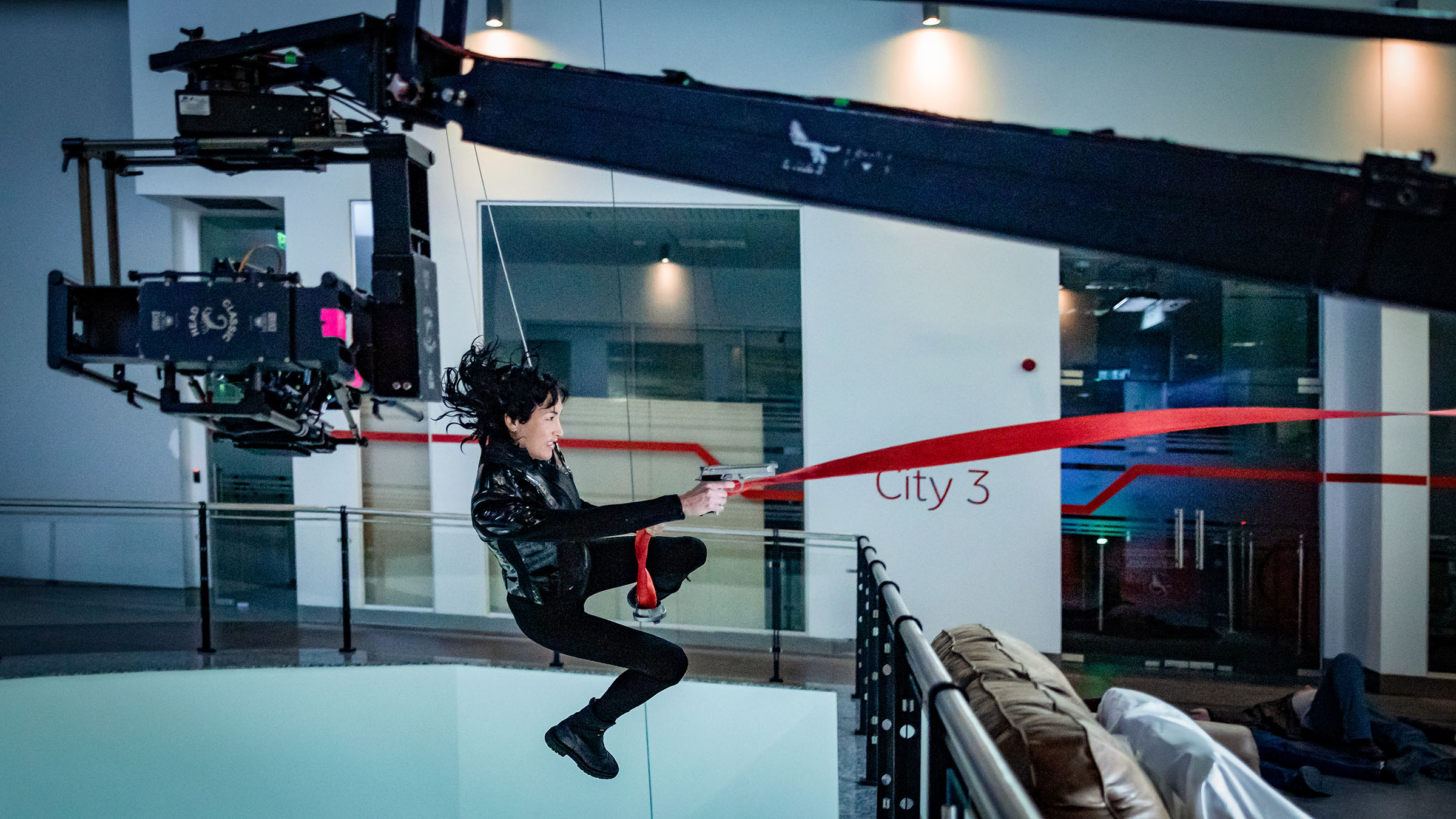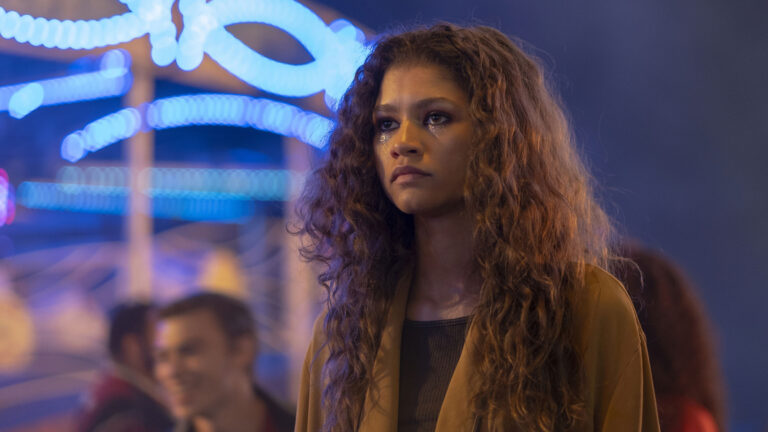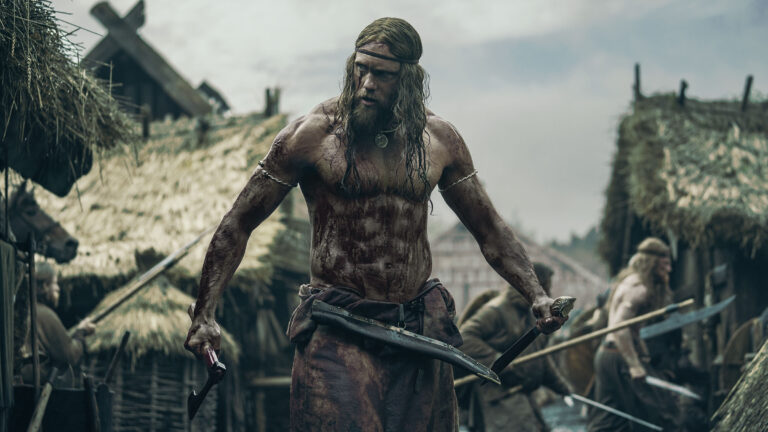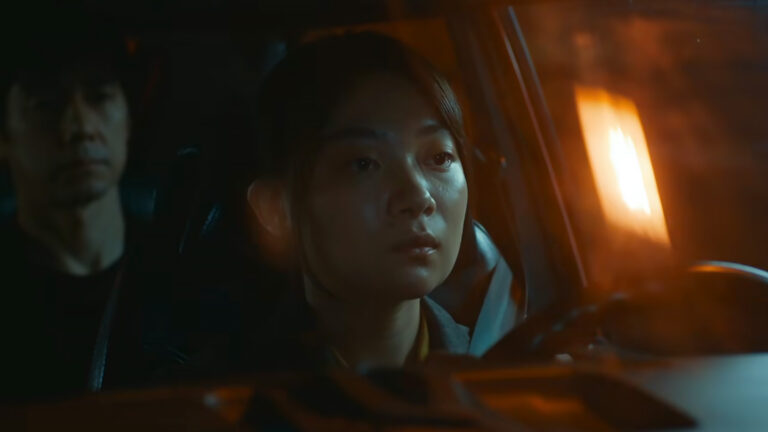Today we’re speaking with Angela Catanzaro, ACE about editing the feature film, The Protégé. Angela and I last talked on Art of the Cut when she edited the film Five Feet Apart.
One of her other films was also a collaboration with the director of The Protégé called The Foreigner. Her filmography also includes Smokin’ Aces 2: Assassins’ Ball. She’s cut numerous TV series pilots and TV series including Code Black, Parenthood, and The Man in the High Castle. She was nominated for an ACE Eddie for an episode of Friday Night Lights.
Listen while you read…
HULLFISH: This must’ve been a blast to edit.
CATANZARO: It was so much fun. The last film that I did was very emotional and very serious. It had fun moments, but it certainly didn’t have any big action sequences and didn’t have quite as much going on as this film. If I had to pick one thing to cut day in and day out, it would have to be action. It’s so much fun for me. The emotional scenes are really the most fulfilling, but day to day, the action is really something I look forward to. When I know I have a big sequence coming, I get really excited about it.
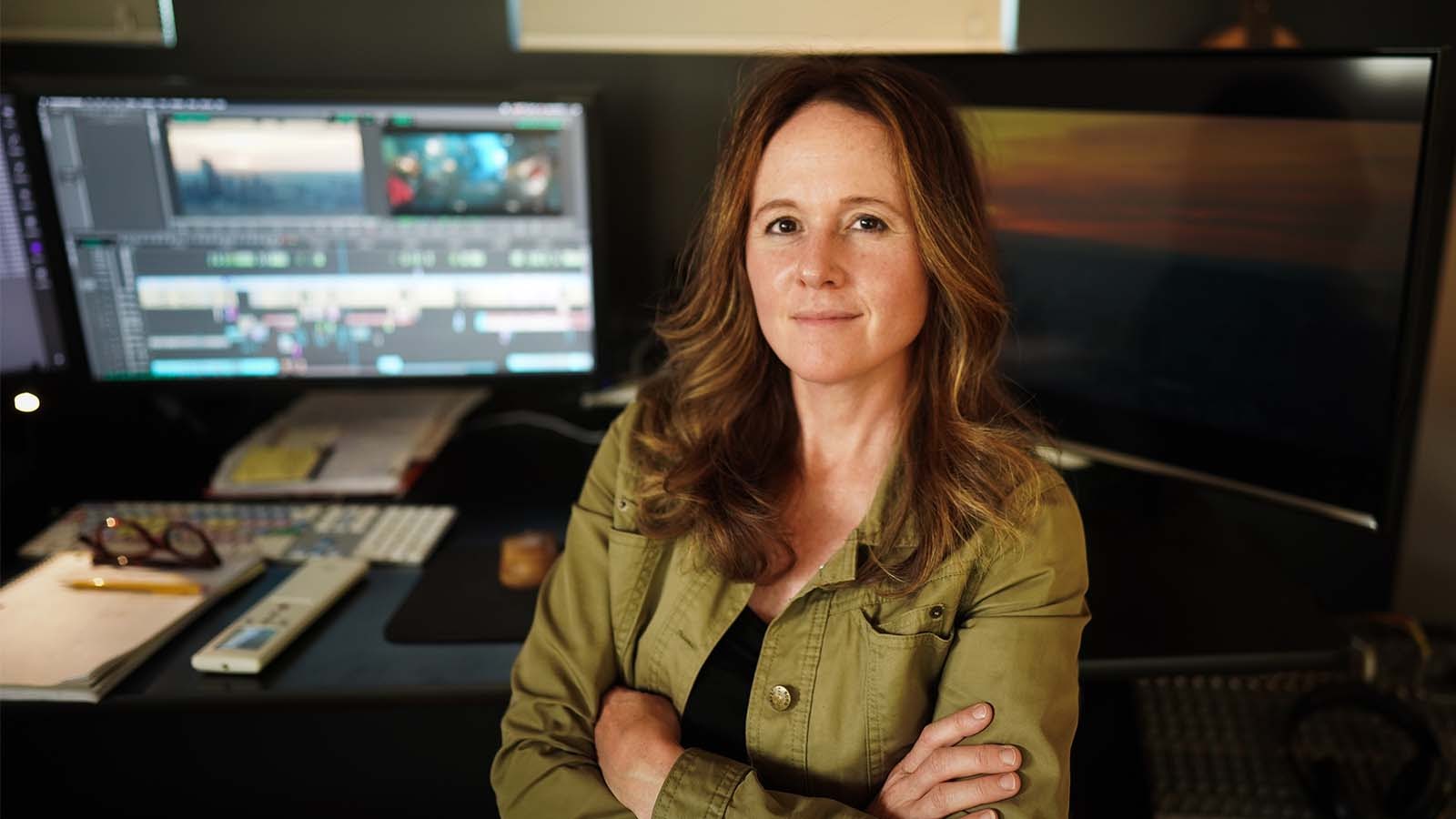
Five Feet Apart was the last movie that I did. That was a very emotional YA [Young Adult] story that couldn’t have been more different than this film. I consider myself pretty lucky that I’ve been able to manage to do all kinds of genres and work with very different content throughout my career. I’d like to keep doing that. I love changing it up, flexing different muscles, and not just doing one thing. I really enjoy experimenting with all different kinds of editing.
HULLFISH: How did you get this opportunity to jump from something that was so emotionally driven and almost no action to this with wall-to-wall action.
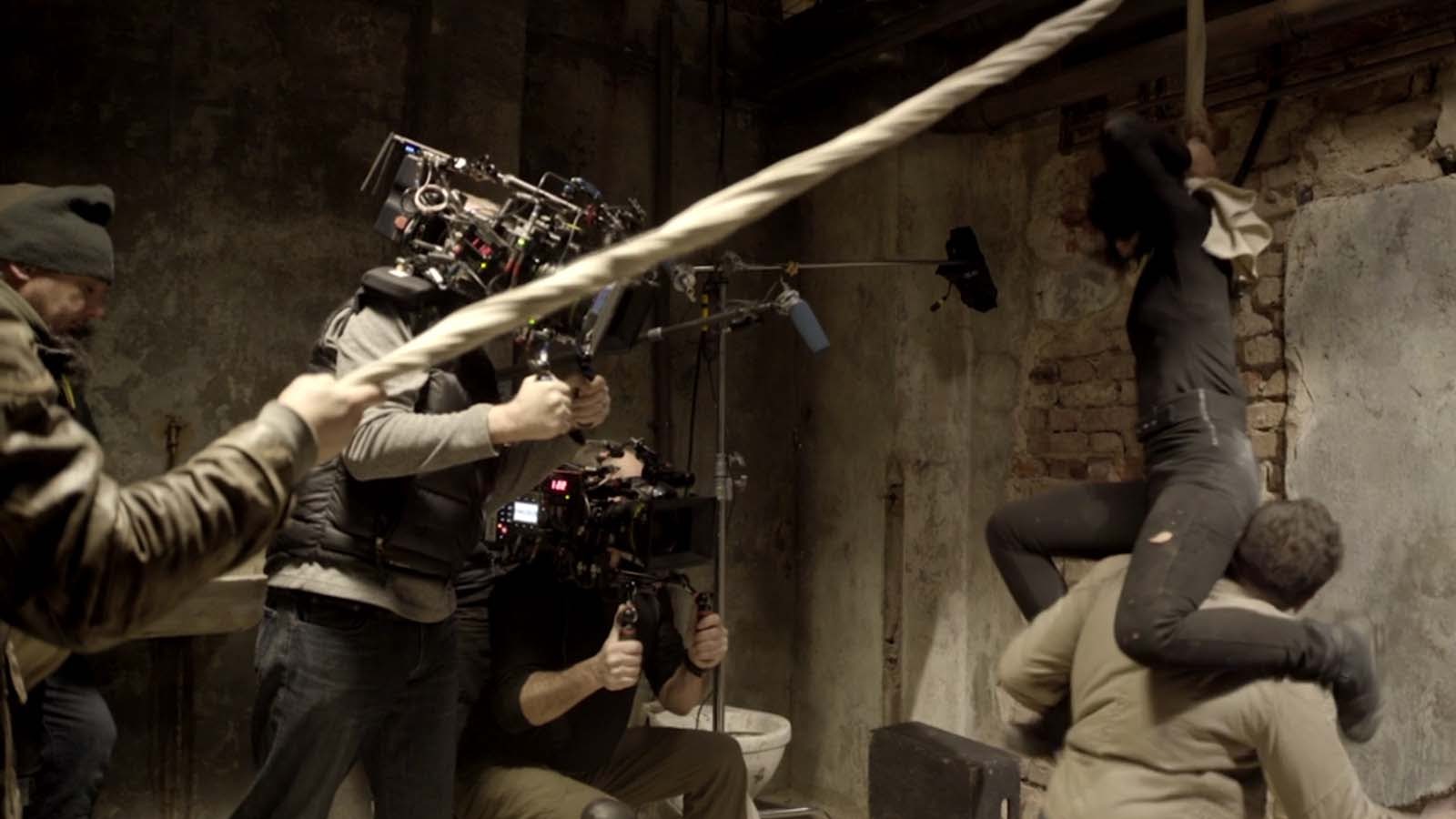
CATANZARO: I’ve worked with the director before, Martin Campbell. I previously cut a movie called The Foreigner. This is Martin’s next film and he brought me along to do this one too. I actually met Martin on a pilot we cut together called Last Resort—a series that got picked up. This must’ve been at least ten years ago. I believe it was Sony for an ABC pilot, and he remembered me and he brought me on to cut two additional pilots with him in subsequent years. That was during the time he had an overall deal at ABC and so he was cranking out these pilots and I was cutting them for him.
He kept mentioning, “I have this movie or that movie.” He’s always got a lot of irons in the fire. He’s always cooking up something. Of course, I was hopeful that something great would materialize. When The Foreigner came around he said, “You’re it.” That was the opportunity that I’d really been waiting for. That was my first big movie, and I got to go to London while they were shooting. That was a fantastic experience.
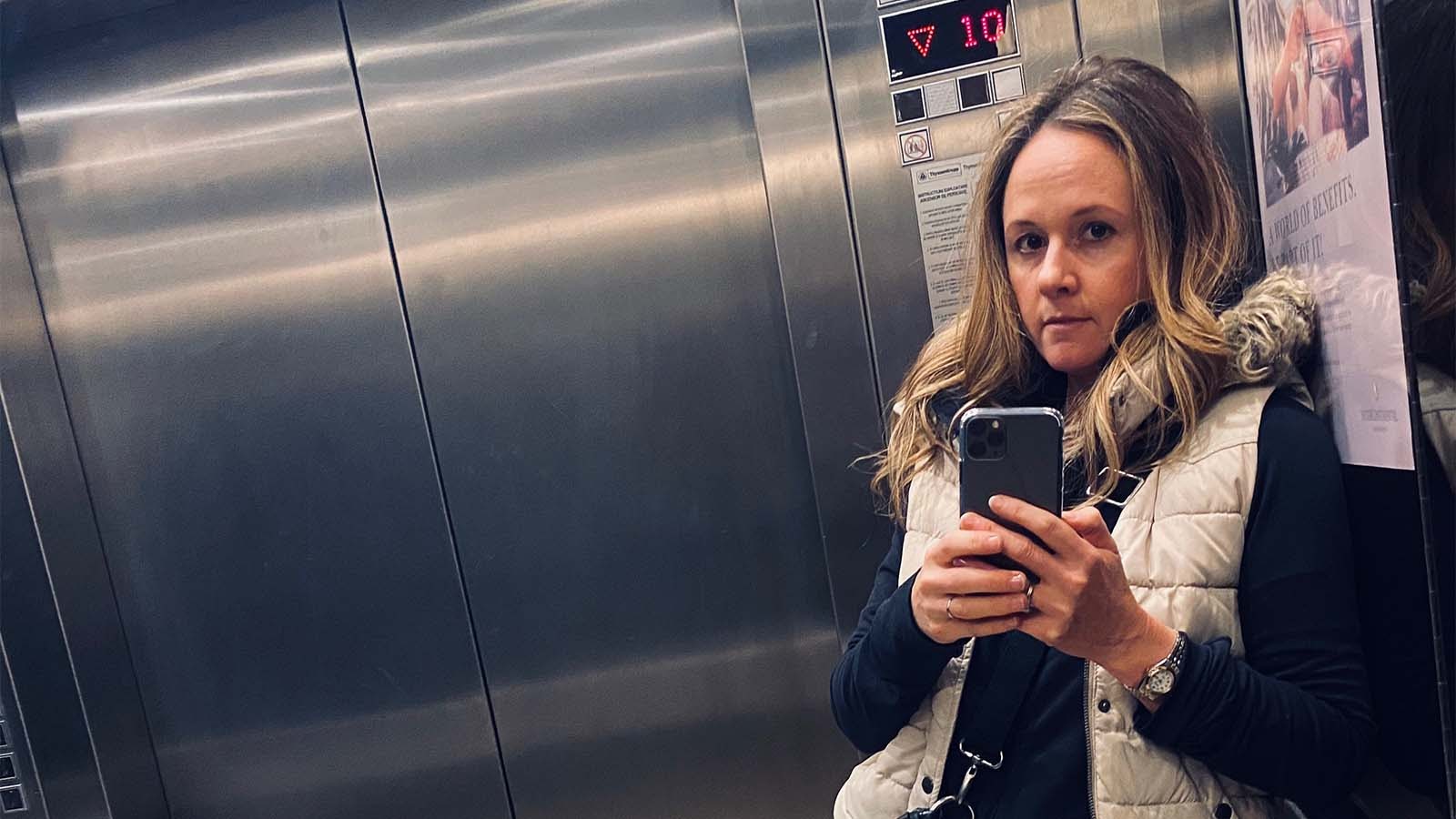
HULLFISH: Let’s talk about the editing of the film itself. I noticed that you set up jump-cutting early on. There’s a scene where Anna is cooking and there’s a bunch of jump cuts. Is that technique something that you feel like you’ve got to set up early on in a movie?
CATANZARO: Not really. I think if the material feels like it wants to be jump cut, I’ll jump cut it. It certainly wasn’t scripted that way. I’ve cut a number of montages throughout my career and so I know when we have these vignettes into somebody’s life and they’re doing something mundane like cooking or driving, you want to make sure that you’re keeping the pace and the story is still flowing. Even though these things might not be essential to the plot, they’re still giving us information about the character. What’s really important in this case is why Maggie’s character is cooking and the care she’s putting into it helps tell us about the relationship she has with Samuel L. Jackson’s character, Moody.
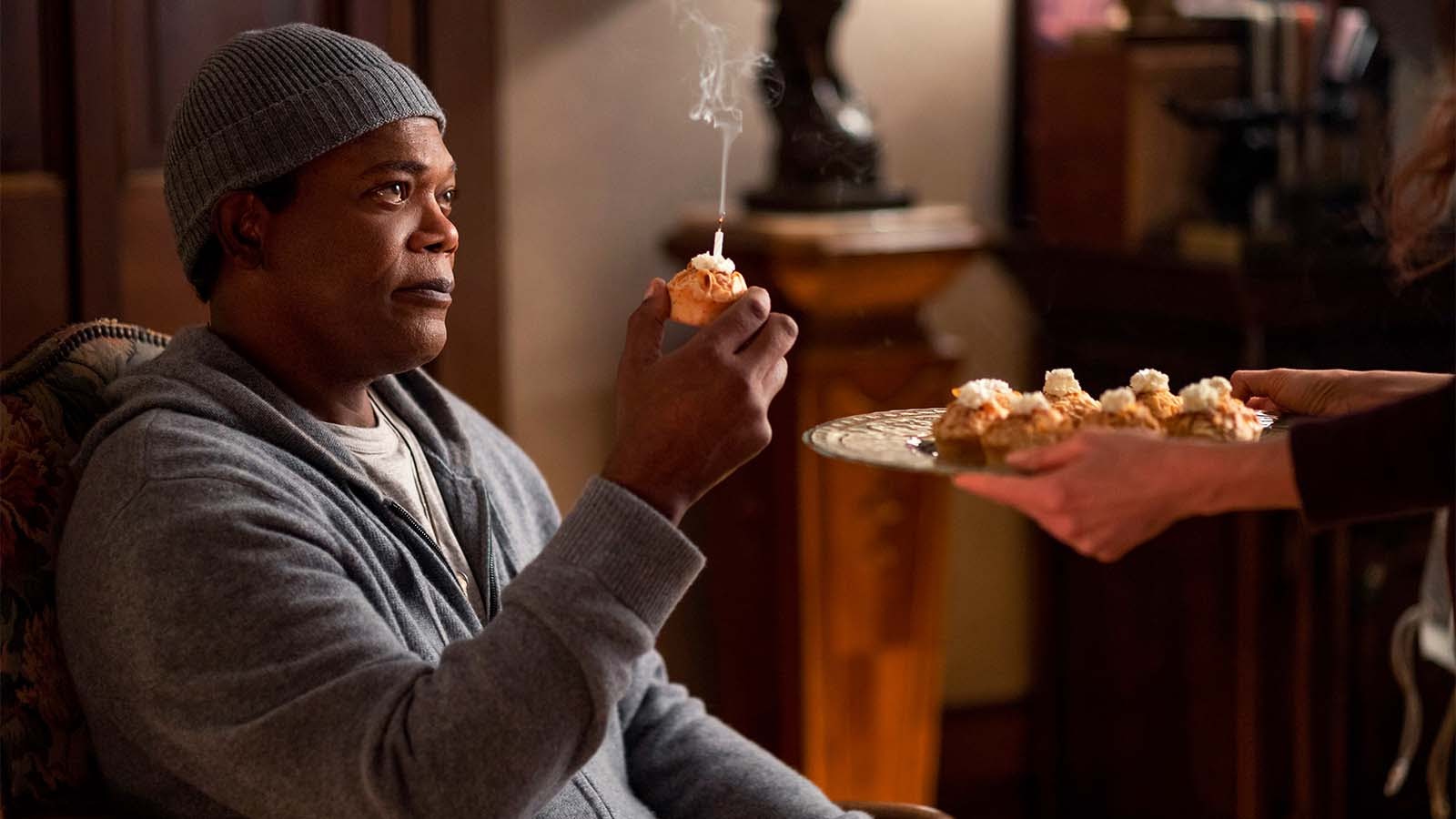
For this sequence, there’s a lot of little tidbits, and I just like to get right through them. Sometimes the jump cuts are just an effort to stay one step ahead of the audience. We don’t always need to see somebody getting from point A to point B. We know if they’ve arrived at point A, they’re gonna arrive at point B. We don’t need to see them transit all the way there on screen.
Little things like that add up over the course of a two-hour movie. If you choose jump cuts and they work aesthetically for the film, you could probably save yourself four minutes from just unnecessary business. For that little sequence it felt like injecting a little bit of fun at this point wasn’t a bad idea. Those cute character moments are a nice balance to some of the heaviness and the blood that we encounter throughout the film.
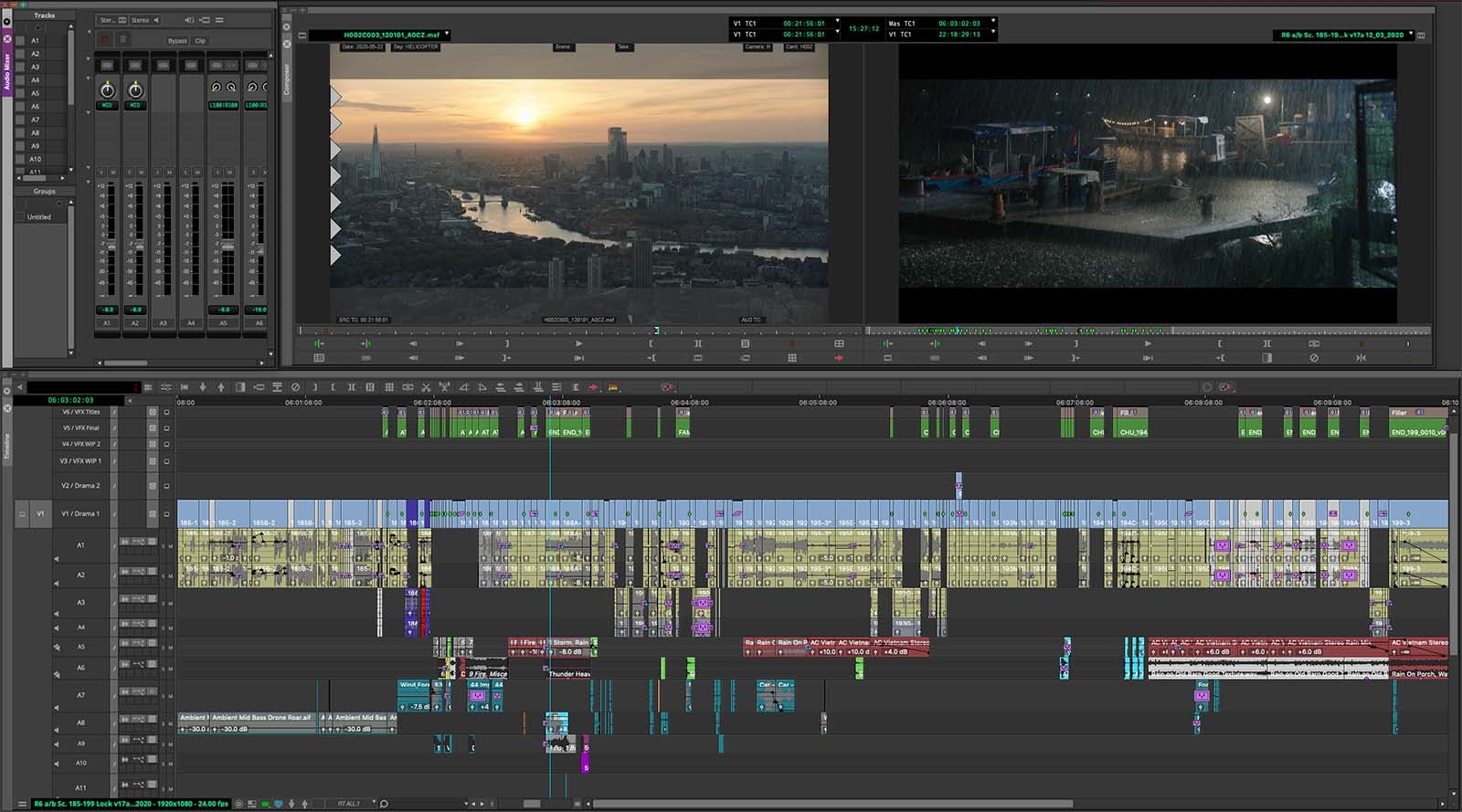
HULLFISH: Are those things that you also tend to revise as you finally see an assembly?
CATANZARO: Absolutely. The truth is if another opportunity for jump cuts hadn’t presented itself later on in the film, we probably would have pulled back on that because it would have just seemed like an odd one-off to do that stylistically, but because we did have other opportunities to do the jump-cutting, it felt like this is the language of our film and we could do this safely. I don’t even remember what song we ended up using there, but it was replaced multiple times because we had clearance issues with the track that I had originally placed there. Fortunately, I was able to work with the picture a little bit to make it play nicely with the music. You’re not always able to do that when you’re replacing songs, but we were early enough in the process that I could still tailor the image to the track a little bit.
HULLFISH: There’s a flashback early on that has some sound design to it. Can you talk to me about making that decision to use sound design to sell that scene as a flashback?
CATANZARO: We’re talking about the one when she’s sitting in her car and it’s a very quick flashback? That came very late in the process. It was a great suggestion by one of our producers because Anna is sitting there in the car and obviously there was something very troubling, but we don’t quite know what it is. This flashback doesn’t tell you what it is, but it gives you a hint that it has something to do with her past. In the previous scene Moody brought that up too, that her past doesn’t make her who she is.
But in terms of the execution of that moment, I think honestly we just played around with a lot of different things and settled on that recipe of a little bit of sound design. There was already music there. There really is a treated snippet of dialogue from the actual scene that will come much later in the film that we’re flashing back to with the violence against her family. It’s very short, but I thought it was a good suggestion and a very effective way to open a window into what Anna is thinking about at that moment. We know she’s troubled, but we don’t quite know why or what it is that has got her feeling that way.
I will admit that when somebody suggests a flashback or something like that, deep down inside I think ‘Oh no.’
I do think sometimes those kinds of flashbacks or flash-forwards are a little gimmicky. I will admit that when somebody suggests a flashback or something like that, deep down inside I think, “Oh no.” It makes me a little nervous, but in this case it really did work. I felt like it elevated that moment and certainly didn’t make me cringe in the way sometimes flashbacks can.
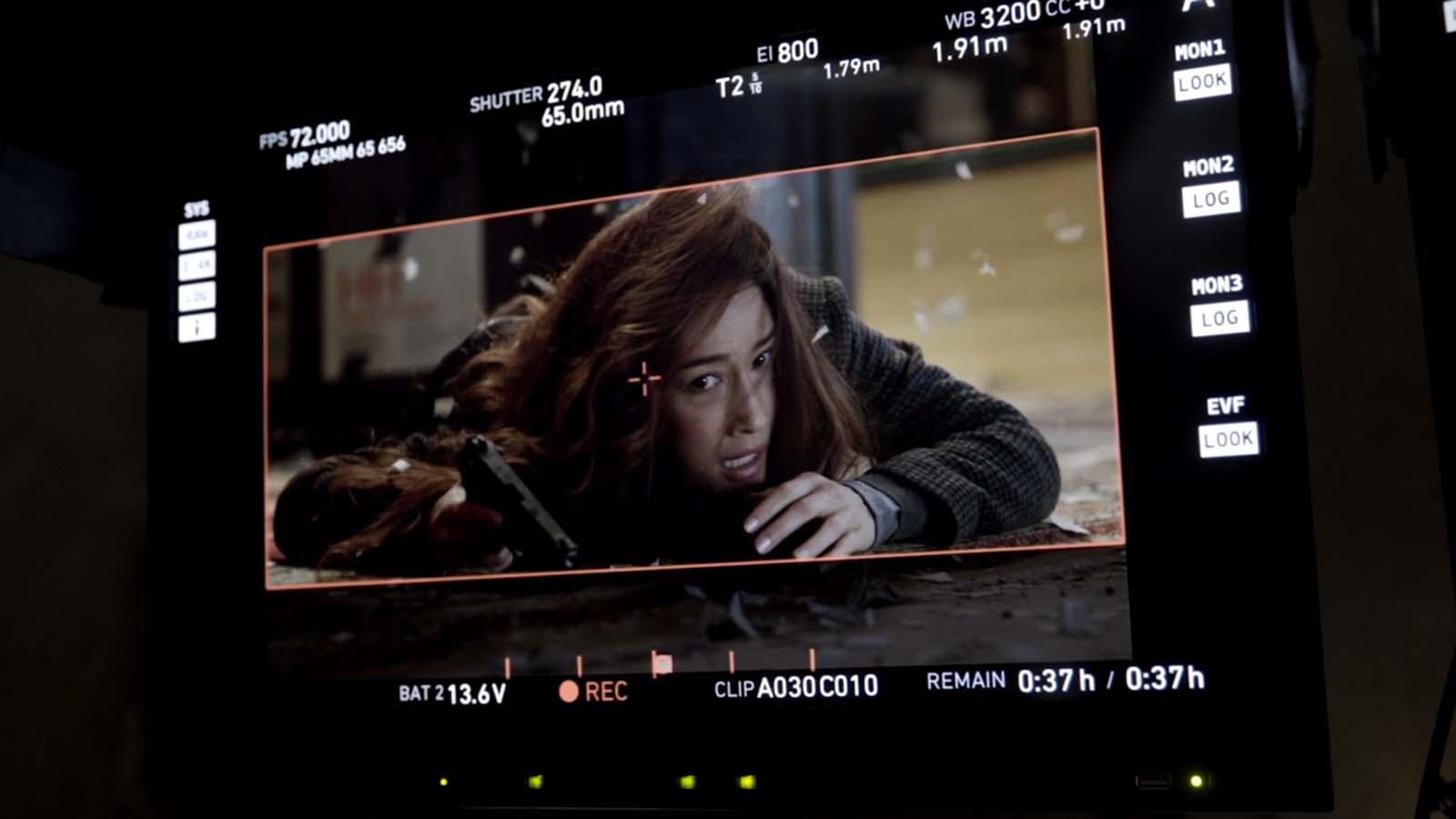
HULLFISH: It’s one of those ideas that if a producer suggests something and if you didn’t think it was a good idea, you’d still want to try it and you could still think, “Oh my gosh, I thought that was going to be terrible, but it actually worked.”
CATANZARO: Yes. I might not say that out loud to the producer [laughs]. What’s interesting though is now working on Zoom, I am facing the director and the producers most of the time, so I have to be very careful about the faces I make because they’re seeing those too. I have to really work on my poker face. You don’t think about that, but normally—pre-COVID—you’re sitting in a chair and the director and producers are behind you so they really can’t see your face, but in this world while we are remote, you get a little more face time with your crew.
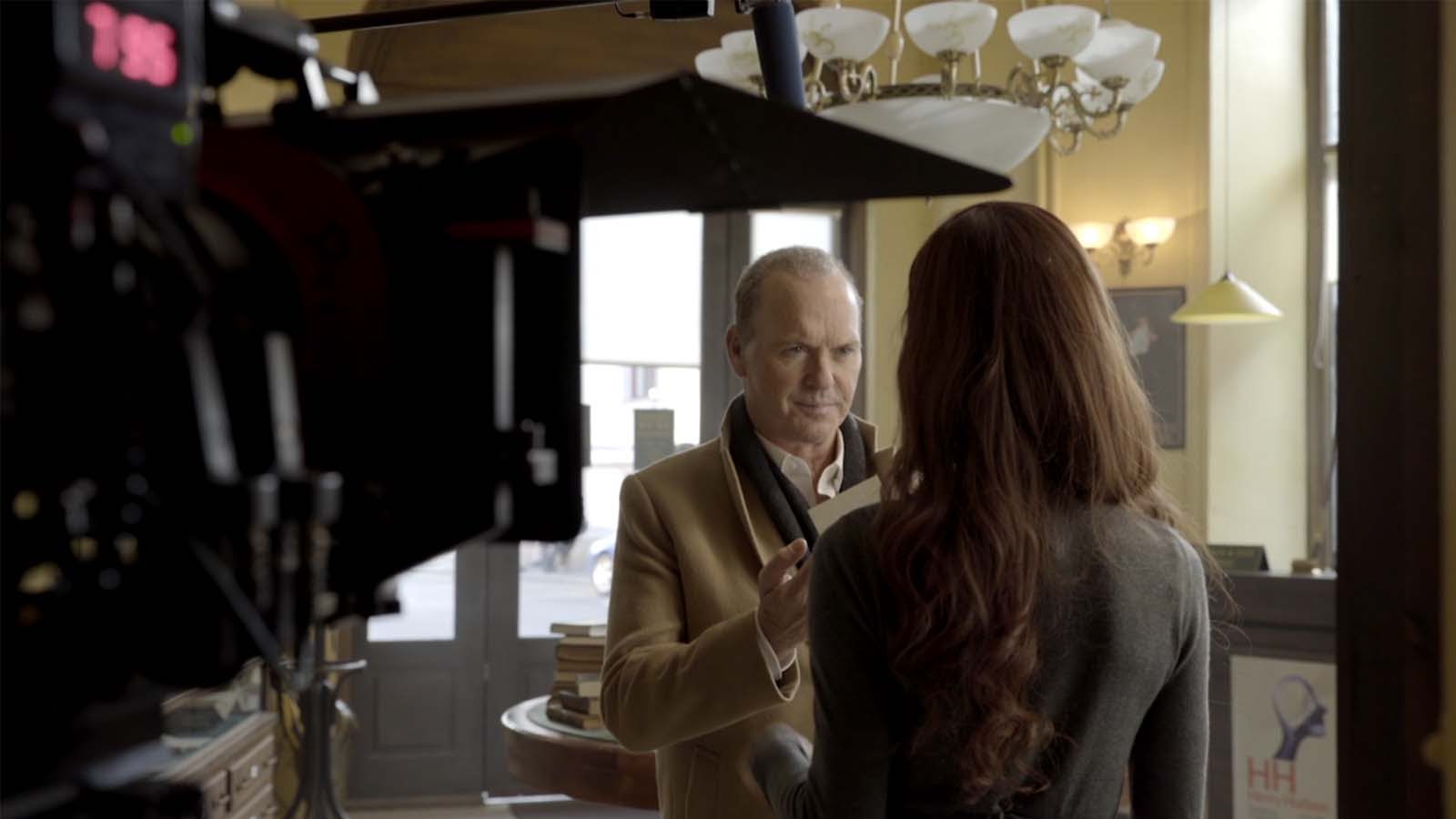
HULLFISH: In Michael Keaton’s first scene in the bookstore there’s some playful banter going on, and I wanted to talk to you about the pace of that because it’s snappy. Talk to me about deciding on that tempo and how much of it is based on the actor’s performances?
CATANZARO: A great deal of it is based on the actor’s performance. I will say, however, I believe that was our very first day of shooting. So they probably hadn’t yet fallen into the rhythm that we would have liked to see and that we did see in later scenes, but they were pretty great for their first time developing that chemistry.
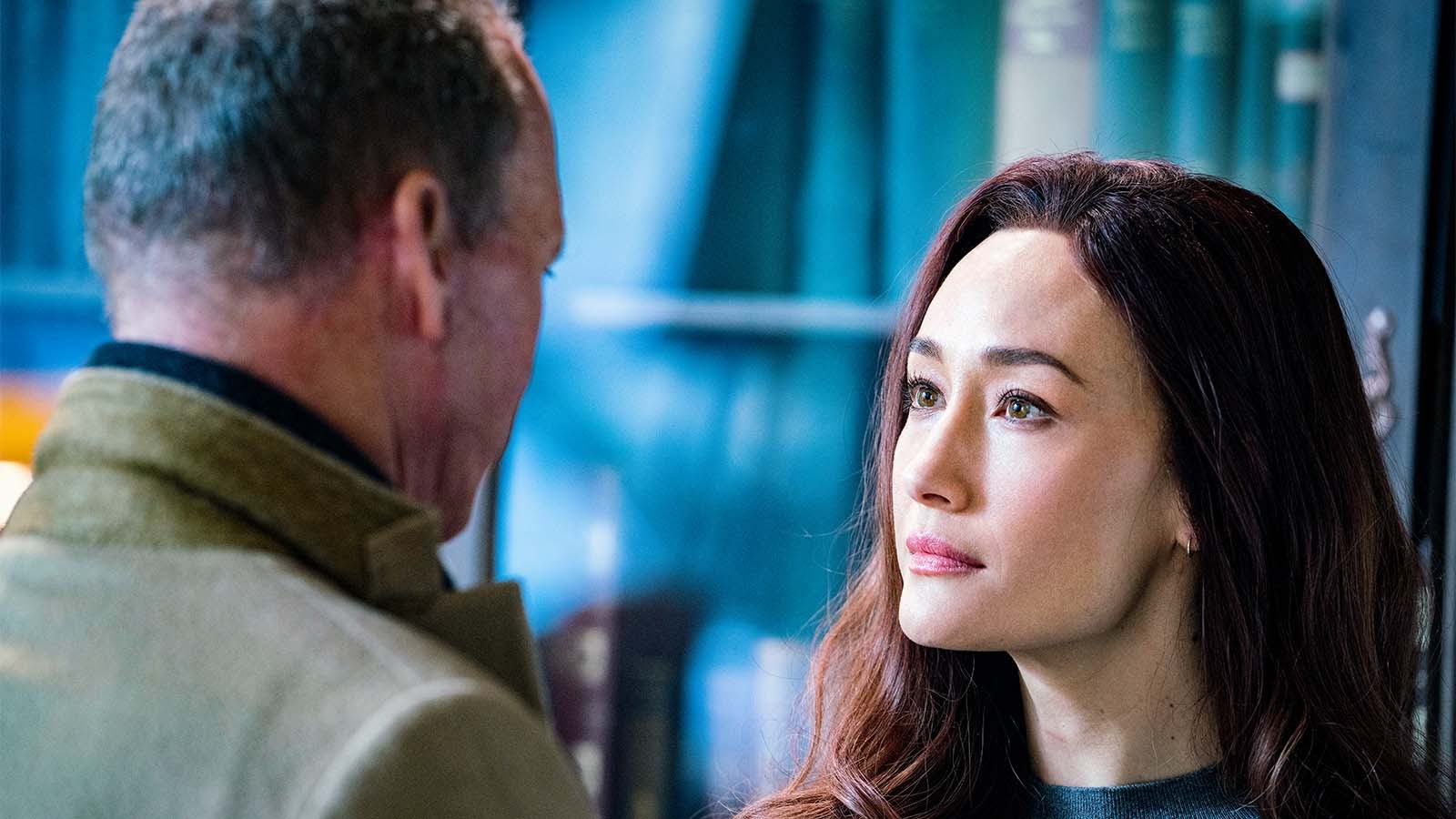
Did I quicken the pace a little bit to make it snappy? Absolutely. That’s Martin’s preference too. He really likes those kinds of scenes to really have a little punch to them, and the actors delivered, but we did help a little bit in terms of pacing.
HULLFISH: There was another person in the room with them, and you cut to some reaction shots of her a couple of times. For you, what’s the value of that?
CATANZARO: That character’s name is Seema, and she’s a friend who works at the bookstore with Anna. She watched Anna’s cat while Anna was off doing her assassin thing. They’re good friends. I think it was important to see that Anna has a life outside of her job as an assassin and that she has a relationship with Seema.
Really their banter begins with Michael Keaton and Maggie [Q]. It’s almost like an eye roll from her friend, Seema, thinking, “Oh, here we go again.” The idea is she’s seen this a thousand times: the guy comes in, he hits on her, he says the wrong thing, and she’s witty and says something funny, and he goes away and we never see him again. I think she is amused by the interaction, and then of course at the end a little bit surprised that maybe Anna is into him. He’s intrigued by her and maybe she is intrigued by him a little bit.
I think it’s important just to see that she does have a relationship with somebody else who is not a killer. We actually did omit a scene with almost a primary purpose to show that she did have a normal life outside of this job, but we ended up getting rid of that scene because it didn’t really propel the story forward. It was mainly just to give us a sense of her character, but real estate is pretty valuable and it was probably a minute that was better spent elsewhere.
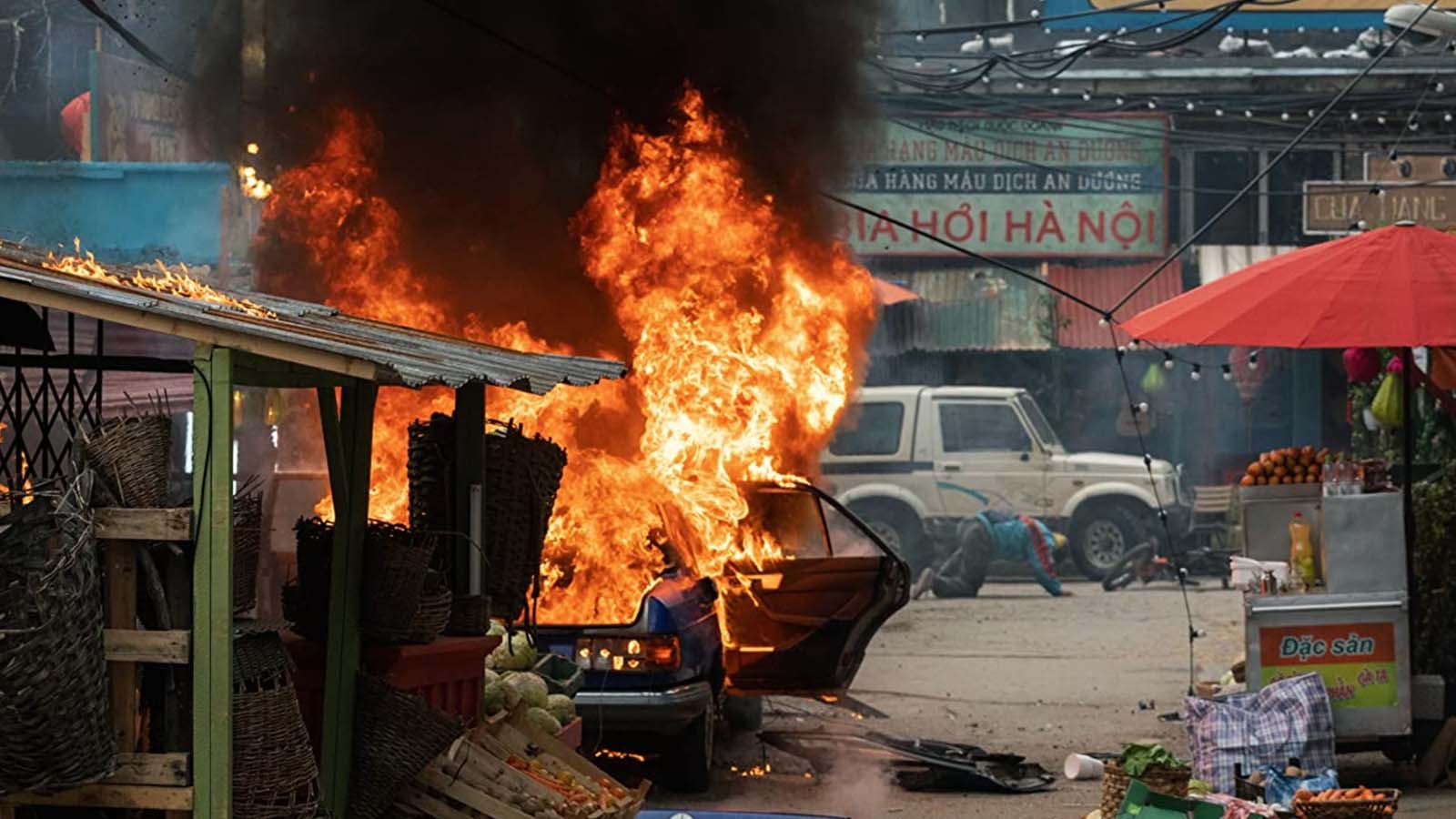
HULLFISH: There’s a pre-lap of an airplane sound as you hear an airplane in one scene and then you cut to it as it lands in Da Nang. What’s the value of a pre-lap and why do you do them or don’t do them on every scene?
CATANZARO: I absolutely love a good pre-lap. I don’t necessarily look for those opportunities. I feel like they just present themselves. The airplane pre-lap comes on the heels of the scene where Anna is researching the guy she’s going to Vietnam to locate, thinking that he’s somehow involved in Moody’s killing, and it’s just pretty heavy. We already know she doesn’t want to go to Vietnam and there’s obviously some horrific backstory we’re about to learn. I do feel like in that moment, the airplane pre-lap is a sound that we all know, and for some of us it does sort of cause anxiety, but for her it’s a lot of anxiety.
I don’t necessarily look for those opportunities. I feel like they just present themselves.
So, hearing that jet engine over the cut clues us in emotionally into where Anna is, but it also takes us elegantly into the next thing which is her arrival at the airport. We don’t need to see anything in-between. We know she’s gathered her information and she’s made it to Vietnam.
HULLFISH: Did you go to Vietnam to edit? I’ve been there to teach editing and I love it there.
CATANZARO: This is a very long story and it involves COVID. What happens when a production gets shut down and you’re almost done shooting? We were wrapping up in Bucharest in Romania. I headed back to LA, the crew was headed to London to do a few days there, and then I can’t remember whether they were supposed to go directly to Vietnam or to Thailand as a stand-in for Vietnam, but those plans were canceled. I think we had five more days left to shoot, and we waited and waited. They toyed with going back to Thailand or going to the Dominican Republic for Vietnam. There were a number of scenarios and plans, and things kept getting pushed and canceled.
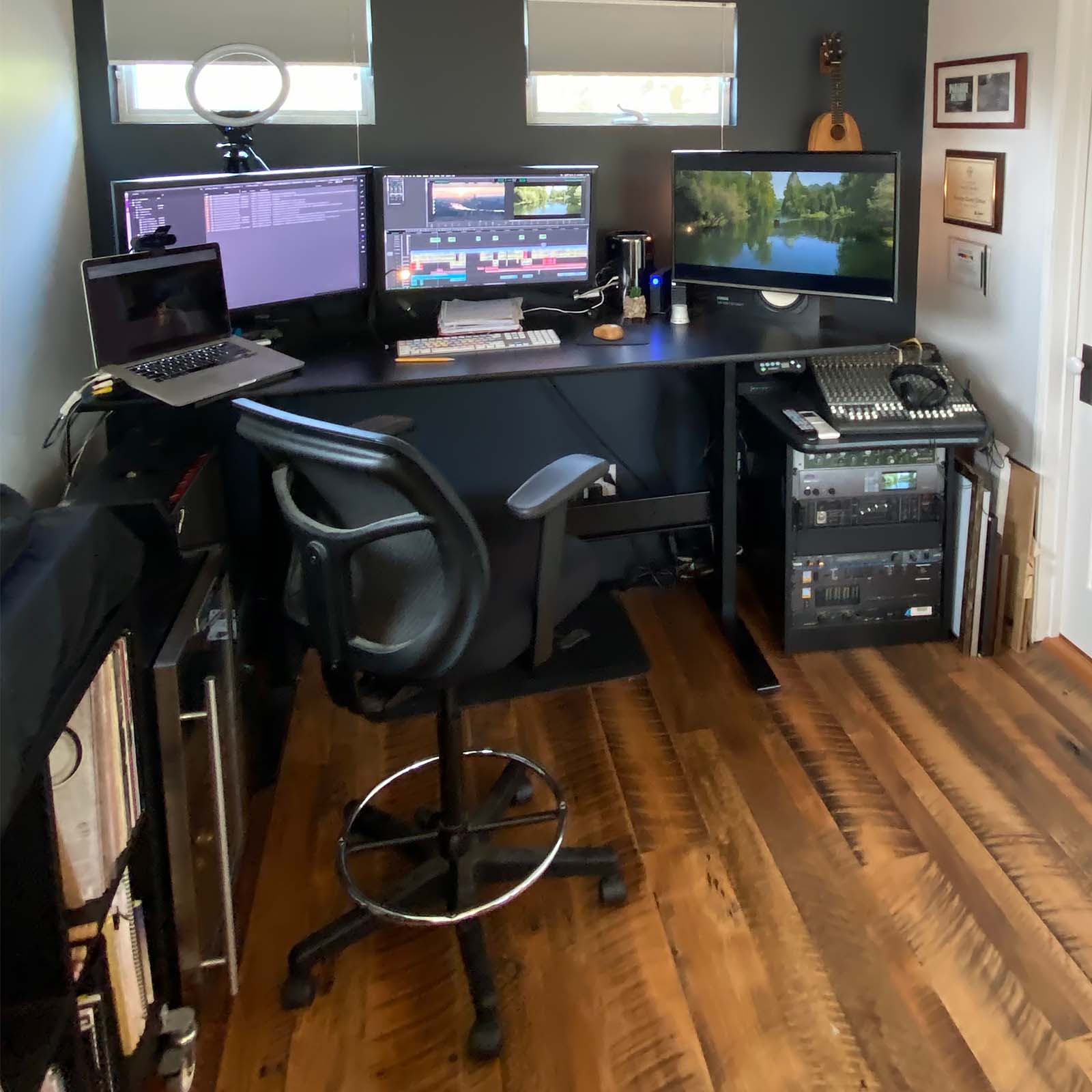
We wrapped all but five days of principal photography in March, and by September everyone was getting really antsy to finish this movie. So, they decided to shoot in Bulgaria and to make Bulgaria into Vietnam. I think they did a pretty good job of it. There were some carefully placed practical palm trees and pots—which I’m pretty sure we got rid of all the pots—but I think they did a really fantastic job of making that countryside look like Vietnam. Then, we did have a small crew go to Vietnam to shoot a few other exterior shots just so we’d have something that was truly from Vietnam.
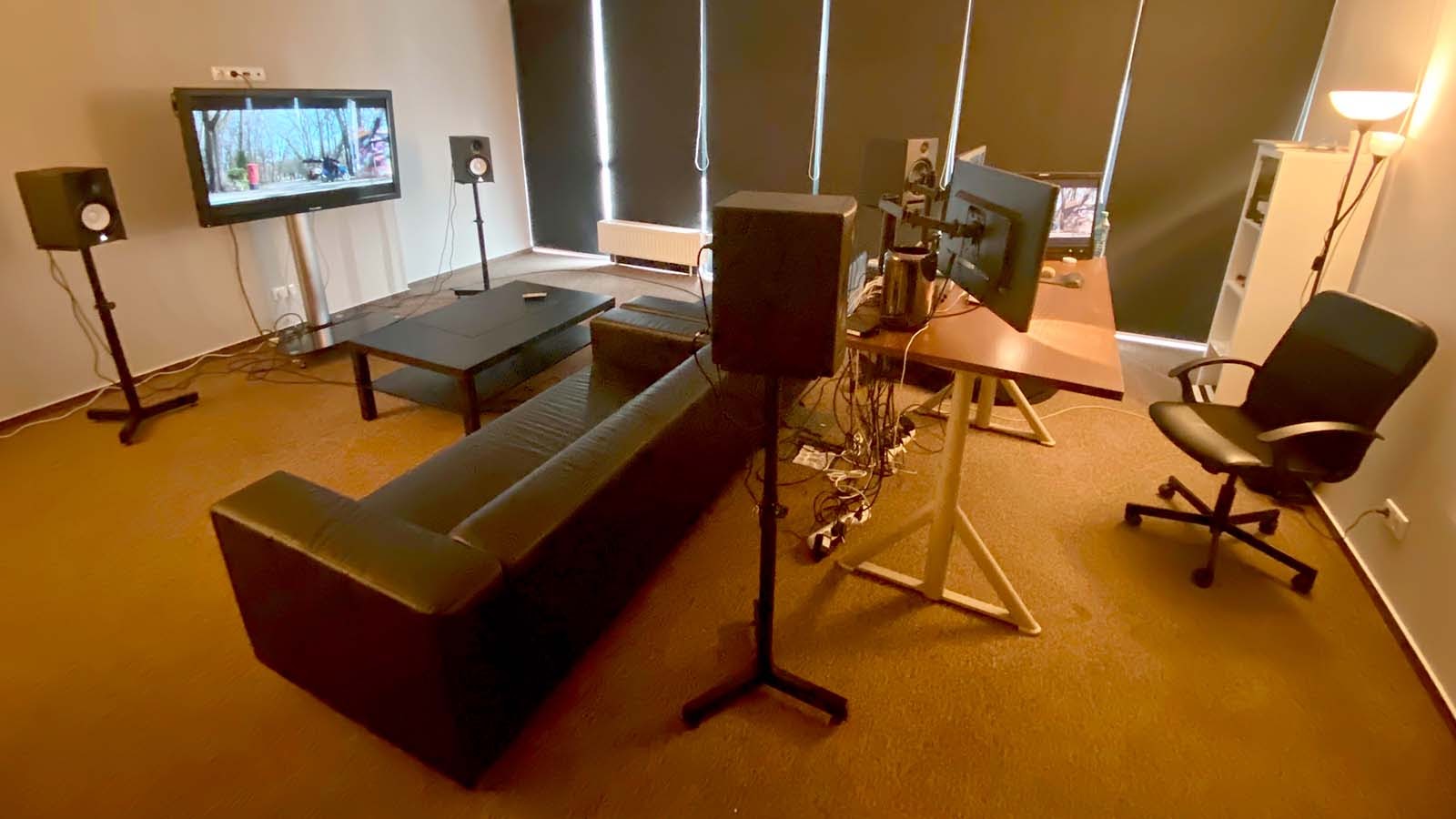
HULLFISH: There’s a very famous bridge that looks like a dragon in Da Nang that made me feel like it was shot in Vietnam. Was Anna going up-river shot in Vietnam or was that Bulgaria?
CATANZARO: That was shot in Bulgaria.
HULLFISH: Wow. That’s pretty impressive.
CATANZARO: That was some VFX in the background with some really awesome matte paintings. There was a lot of trickery in this movie and I was skeptical, but for the most part it really did work out.
HULLFISH: Robert Patrick plays a Hell’s Angels kind of guy, and there’s a point in the movie where he’s describing the security situation around a key figure in the movie. As he’s telling her about the security, you actually cut to show that guy while you’re hearing him continue to talk. Was that scripted that way or did you pull that up?
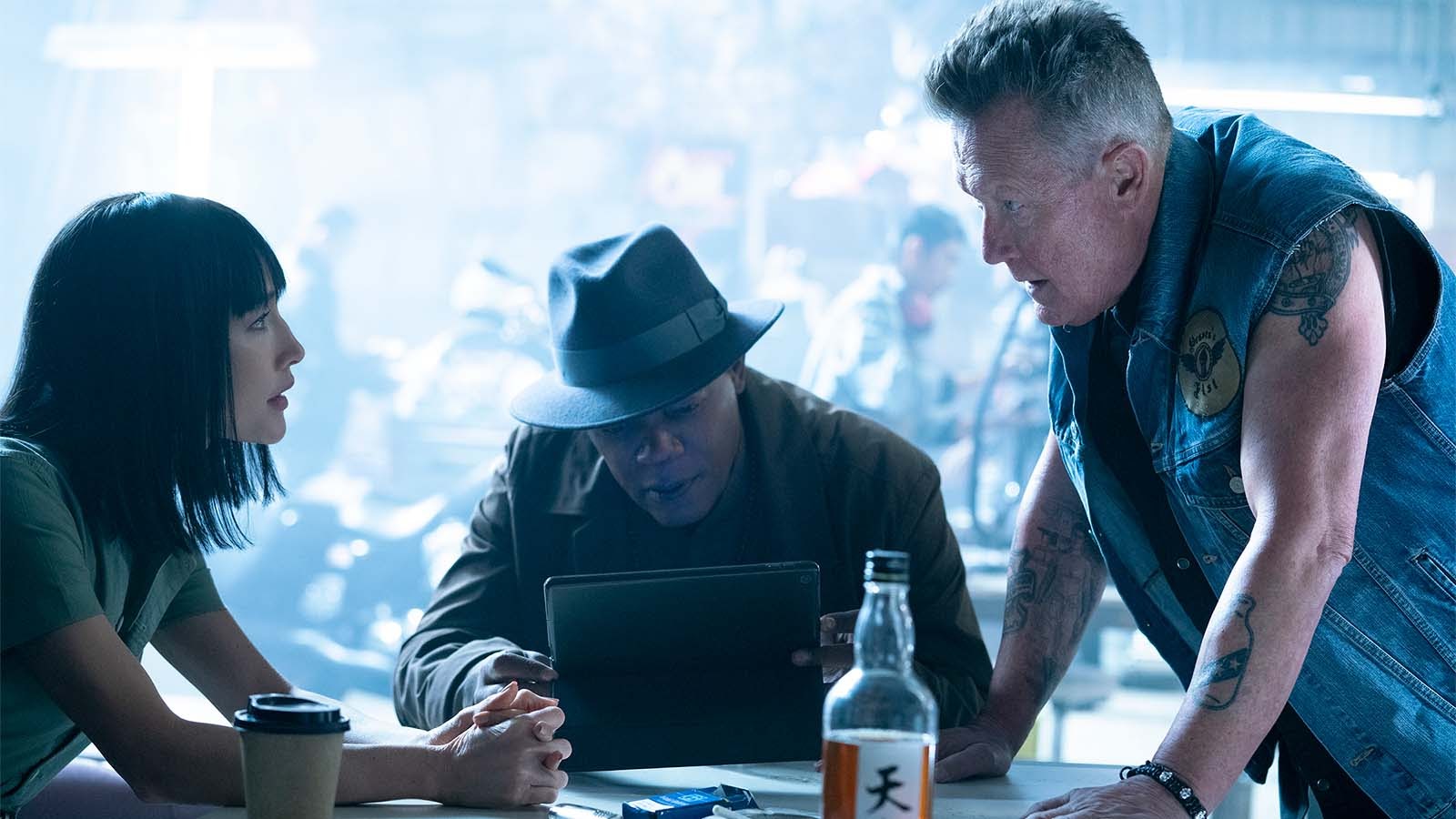
CATANZARO: I think a piece of it was scripted that way, but I definitely embraced that idea wholeheartedly. I love to do things like that. It’s not very interesting sitting on a guy talking about somebody else. Let’s hear it and show it at the same time. That’s the reason for the jump cuts there too.
The action itself on its own is very uninteresting. It’s a guy walking down the hallway, a guy getting into the car, and a guy lighting a cigar. When you just take the most interesting bits like him coming around the corner with his business thugs, his entourage, behind him, and then when he’s in the car and it’s dark and raining. He lights the cigar, and the cigar has come up several times and is important for Anna because she makes a weapon out of one of them. So, to me those are the most interesting bits. Why not just tie them all together? I think it makes for a much more interesting scene.
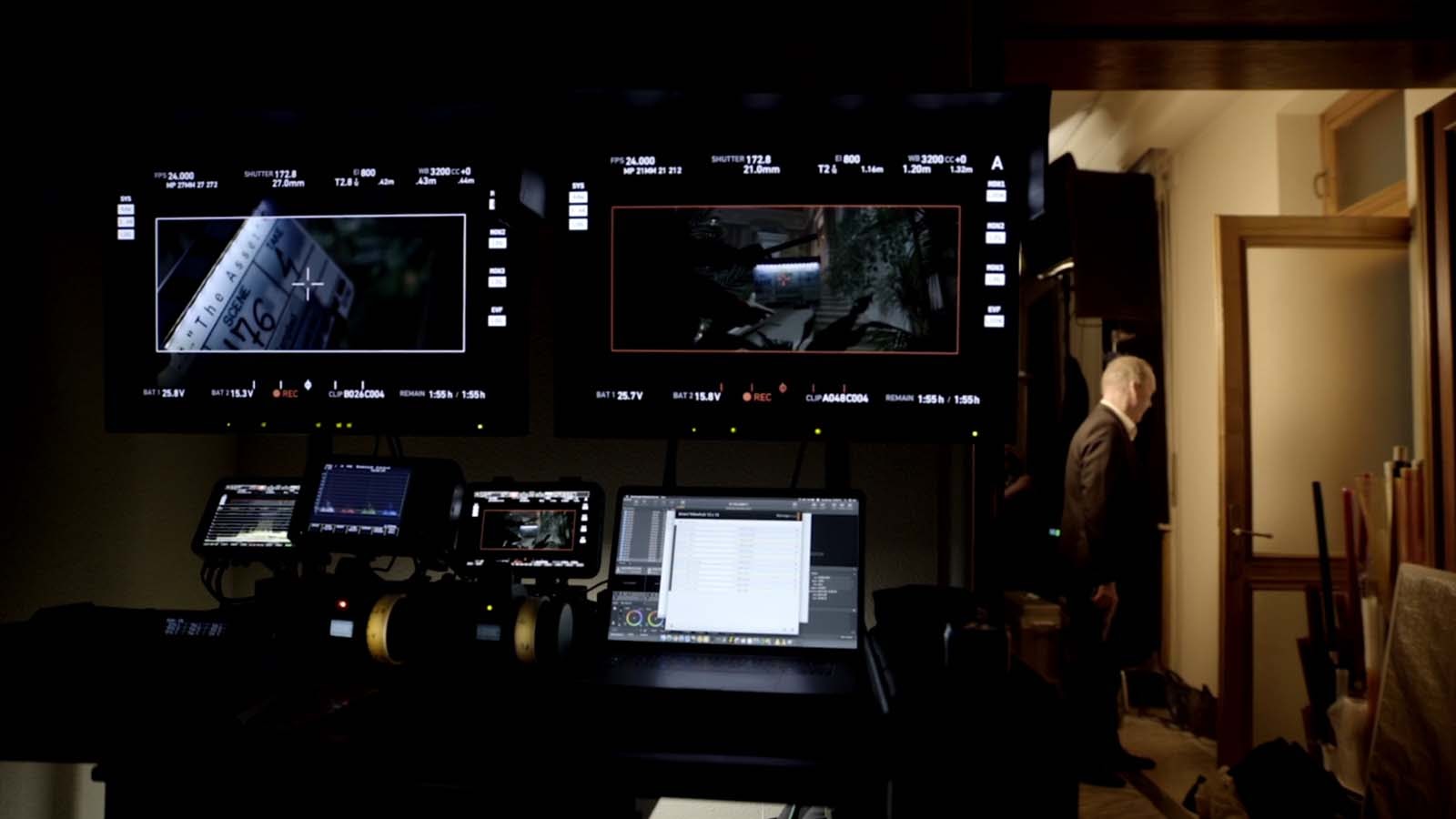
I actually really loved that score there too. It’s a very simple piece, but I like those really atmospheric bass-y tracks that just give you more of a feeling. You’re not really hearing the score, you’re feeling it more than anything.
HULLFISH: Do you remember if you temped with something specific for that?
CATANZARO: What ended up in the cut is very similar to what I temped with. We did hire the composer pretty early on and he was very proactive getting us tracks. He supplied us with a lot of temp. Because I felt like his sound and scores that he had done for other movies and projects worked so well, after he came on board I went through and I swapped out a lot of the temp score for his tracks. Even though they weren’t things that he had written specifically for this project, it did give it a more cohesive feel. The sooner that you can link things together sonically or with music, it makes the film start to feel more complete and makes it easier to watch.
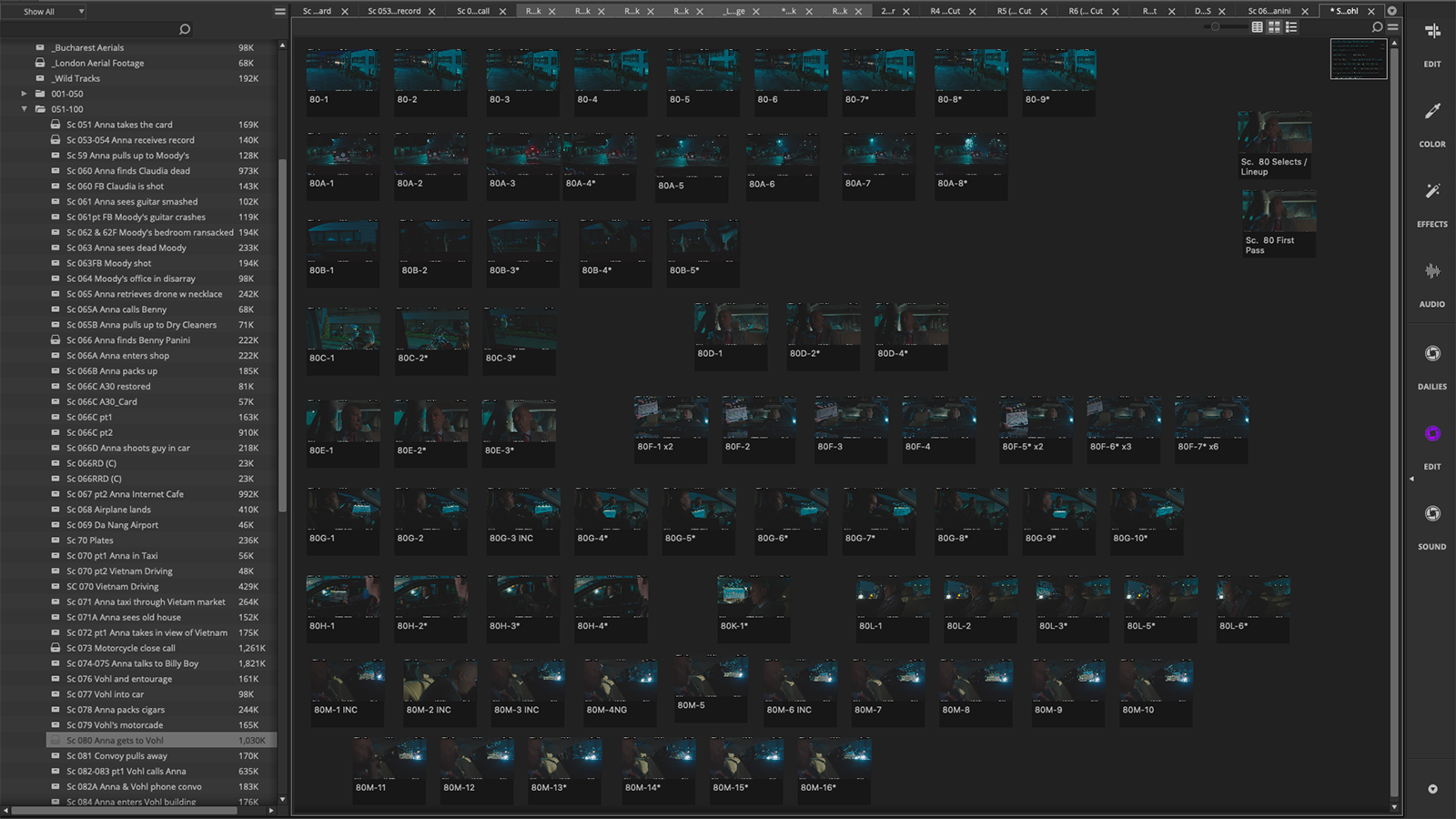
You end up revisiting themes, themes develop, and it’s a much better experience for the viewer. So, especially when we start showing people, I like to have a pretty good handle on the music and make sure it feels correct. A lot of times when I show somebody something and I’m not really happy with the music, I feel like I have to give them a disclaimer because that isn’t what it’s going to be, but I don’t like having to do that. I’d rather it just feel right and be correct rather than have to make excuses. So, we did try really hard to make the score feel as unified as possible early on.
HULLFISH: Talk to me about getting in and out of flashbacks. Is there a trick to it or do you just treat it like it’s any other cut to a scene?
CATANZARO: The violent family flashback comes off of Anna’s face. She is in a boat, it’s raining, and we have lightning. It’s very dramatic. She falls into the frame, the rain is beating down on her face, the light is very dramatic, and we are in a closeup. If I’m not mistaken to get us into that flashback there is a thunderclap, but it also coincides with a bad guy smashing in a door. So, to get us into that flashback it’s really a sound event that takes us right in.
But again, it’s off of Anna’s face in a closeup, so we know that this is her memory based on the language of cinema. We just accept that we’re on her face, we’re going somewhere else, and that means this is her memory. I love experimenting and trying new things all the time. I’m always looking for different ways to do things with sound or with images, but sometimes you just need to lean on what works.
HULLFISH: There’s a montage in the film before a big black tie party showing how tight the security is, and there’s really no dialogue in there to help determine the length. Talk to me about deciding how long that should be. Is that another one where you had the original montage cut at maybe four minutes and you cut it down to 30 seconds when you finally saw the whole film?
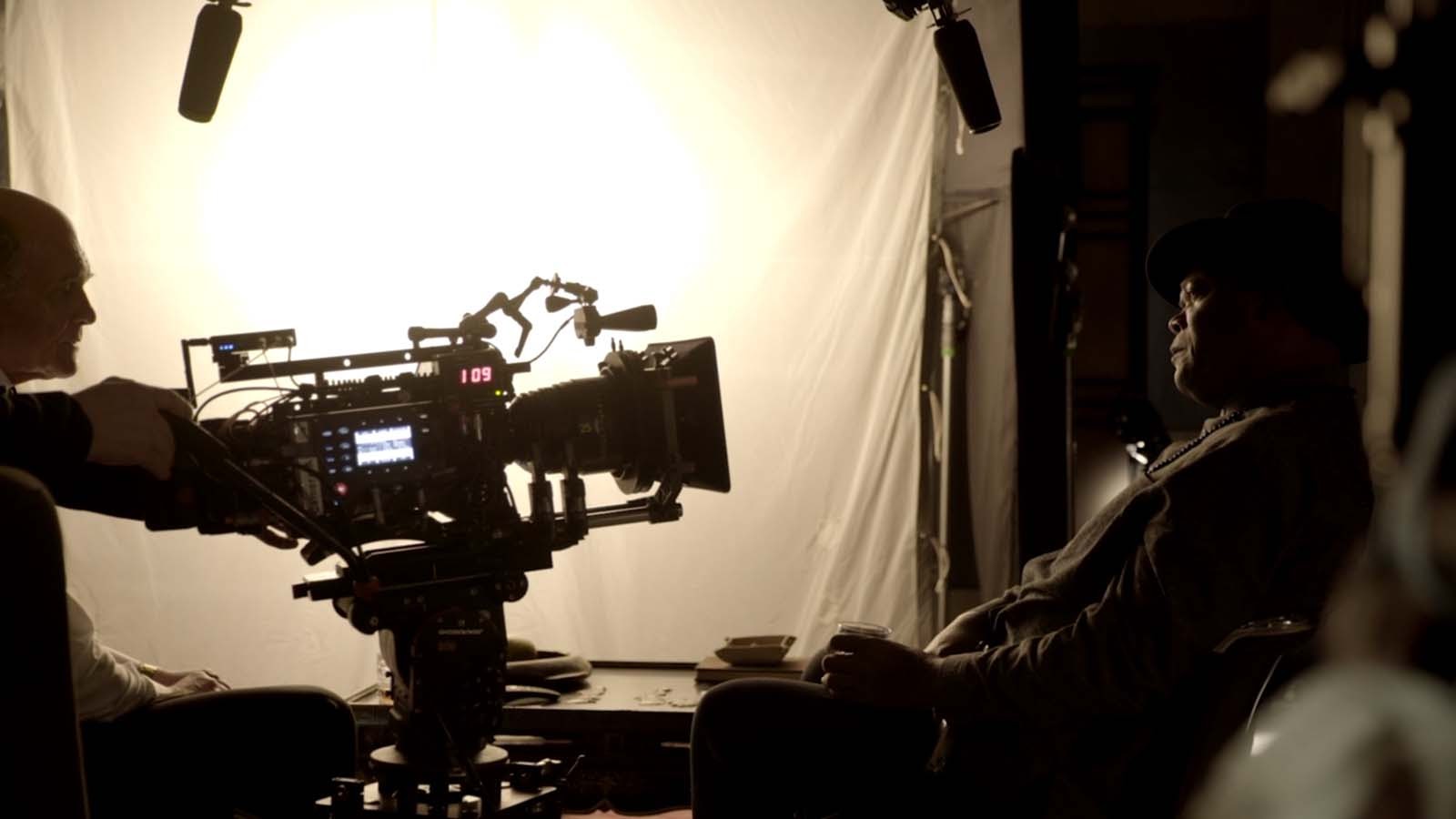
CATANZARO: I don’t believe that montage is actually vastly different from the first cut. I do think I cut it pretty tight and we may have omitted one or two shots. We tightened a few things and I guess we did want it to have a build, even though there isn’t any dialogue. So, we were just being aware of things we showed and tried to make it feel like a progression.
I do know that those beats in that montage are not in scripted order. We rearranged them and landed on the order that they live in now because it felt like one thing was building on another. We have the dogs, we have the drones, we have the boats, and then finally I think the last shot in the montage before we see the people getting off the boat is the small boats circling the waterway at sunset, so that felt, obviously, like a natural thing to take us into the gala at night. That’s one where we had the right score and really just trusted the images to tell us what length was required. There was some trial and error for sure.
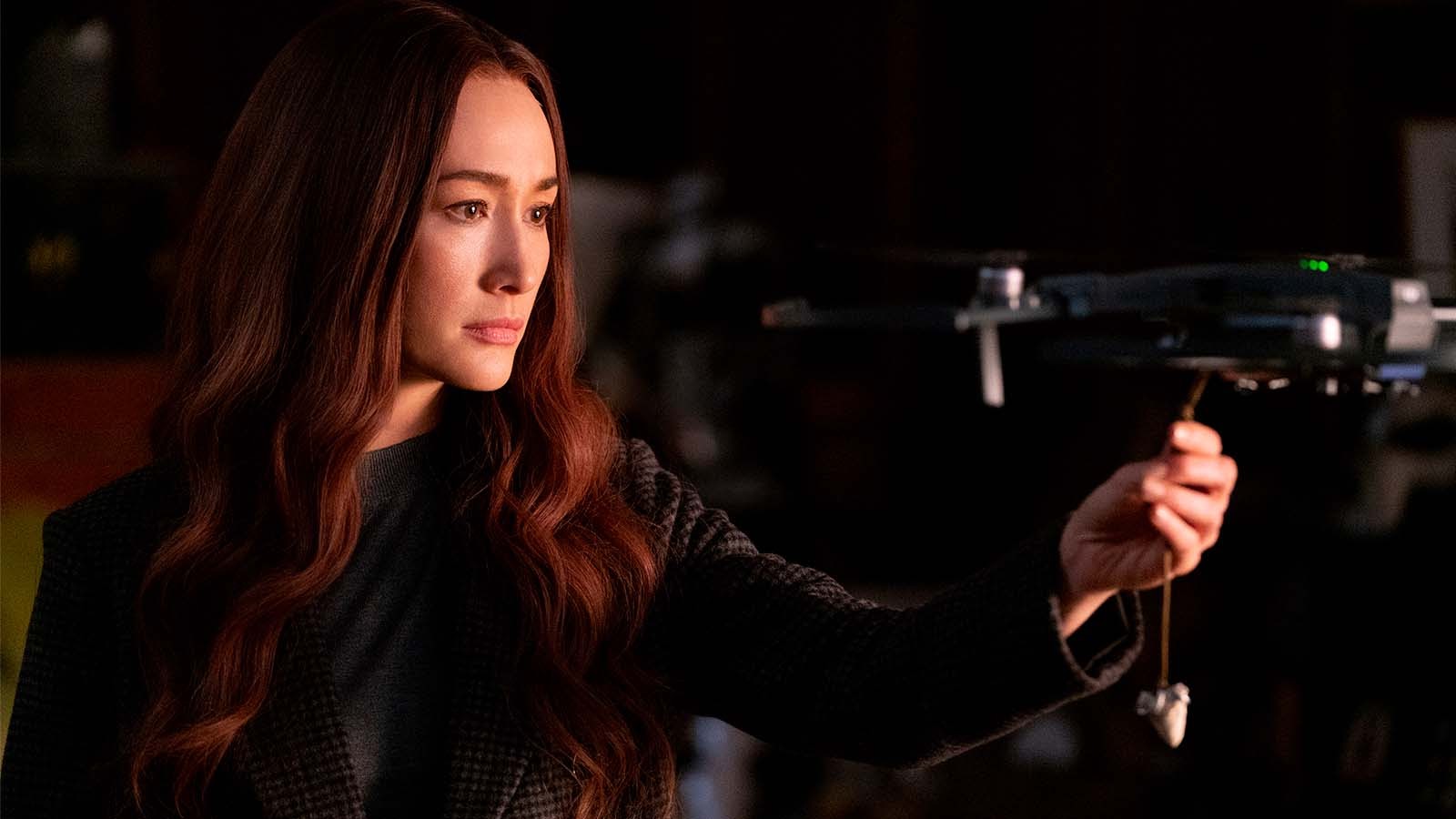
HULLFISH: You build tension beautifully. What are some of your tips for building tension?
CATANZARO: You can build tension in two ways. It depends on the scene. You build tension with quickening cuts, or you build them with long sustained actions and looks. It really depends on the scene, and also what the actors are giving you because they might not give you that long sustained look, so you might have to get something else out of your tool kit to make it work.
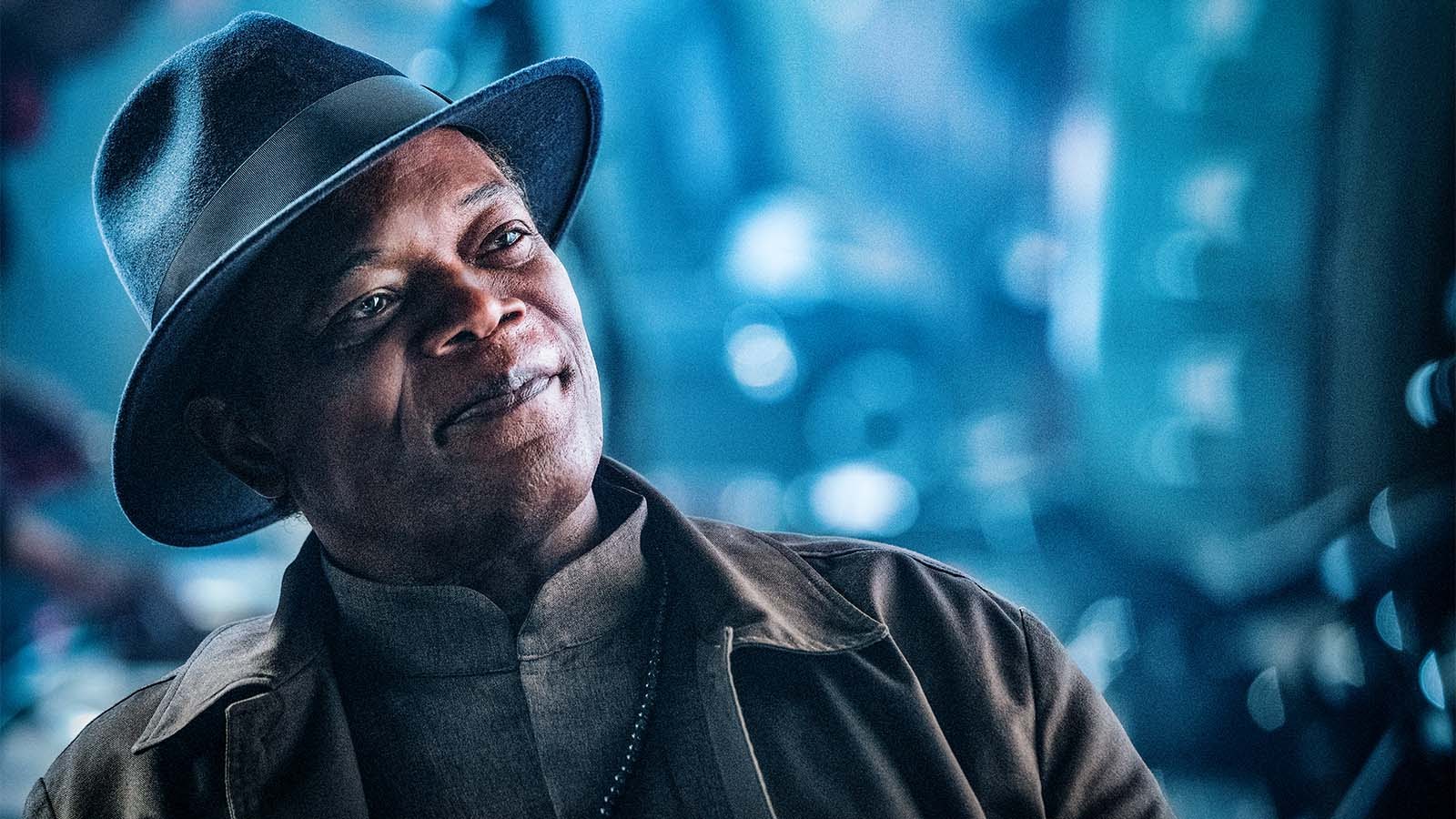
These actors are really phenomenal especially in the case of Samuel L. Jackson. He gave me some tremendous line readings followed by these looks that made me want to just sit in them forever because it’s absolutely incredible. When he has a gun in his hand, it’s amazing what he can do with just a raise of an eyebrow. In the case of the actors we had in this film, you can really be on them and allow the tension to reveal itself through their performances. You’re not having to work as hard as sometimes you do to really create something that’s not there. They really did a fantastic job of delivering it.
You’re not having to work as hard as sometimes you do to really create something that’s not there.
HULLFISH: There’s some intercutting at the end of the film where two things are happening simultaneously. You’ve got two lead actors in different locations. How scripted were those intercuts and what led to changing some of those scripted choices of when to cut from one to the other?
CATANZARO: In that section of the film the script was a very good template for us, but we did make adjustments. I can think of one section in particular where you have this very intense dialogue between Samuel L. Jackson and David Rintoul, and then we’re cutting back to Michael Keaton making his way through this indoor greenhouse basically.
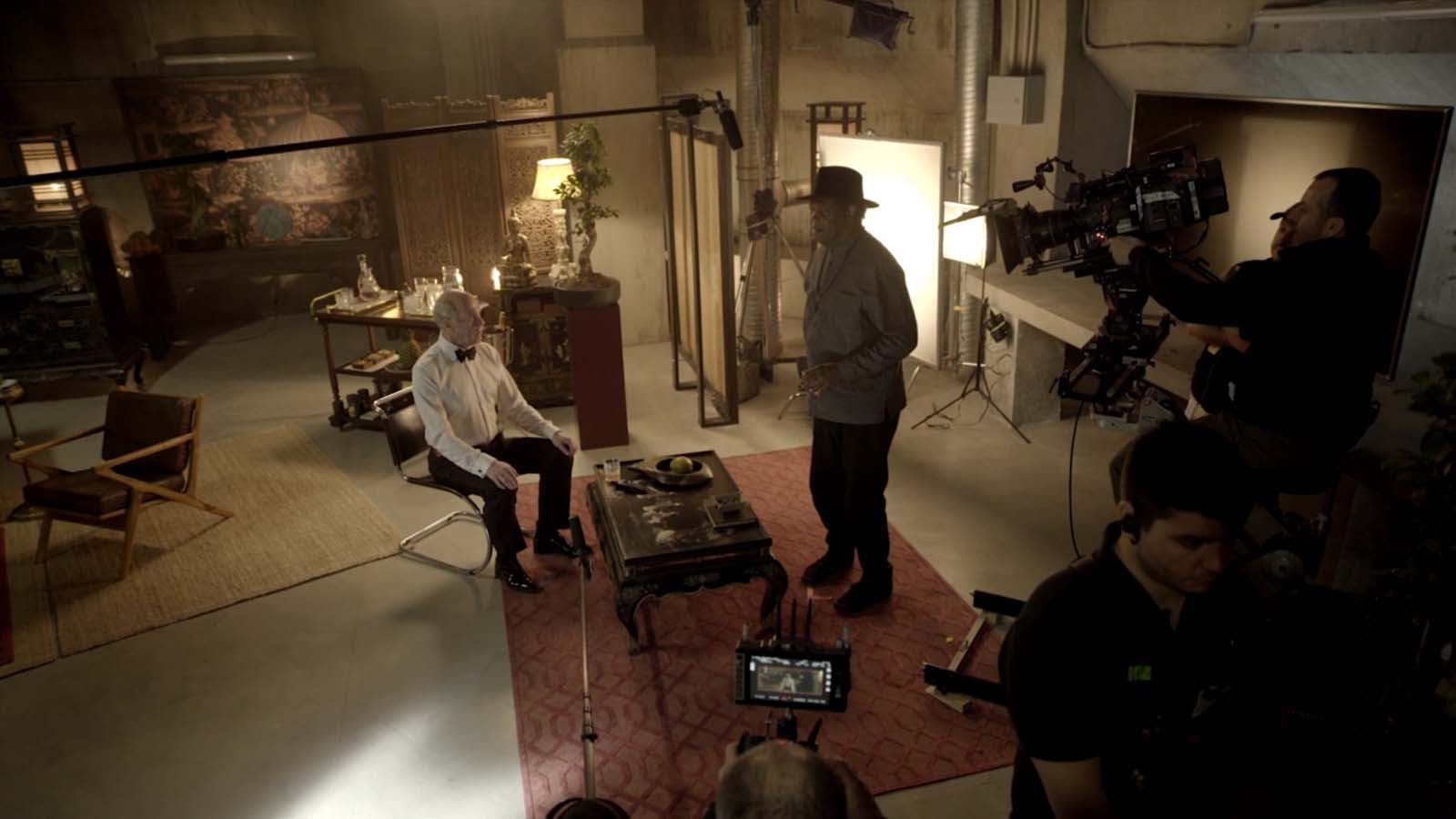
I remember there was one scripted intercut where we had at least four or five lines of very intense dialogue and then we cut back to Michael Keaton and he just made his way through some plants, and then we just cut back to intense dialogue. It just did not seem like the right balance, so of course in those places we have to adjust. It is not vastly different from what was scripted, but there’s a rhythm that needs to develop, and then you have to stay in that rhythm, otherwise it starts to feel a bit awkward and off.
HULLFISH: You mentioned working from home. What was that situation like? Luckily, it was a director that you knew, right?
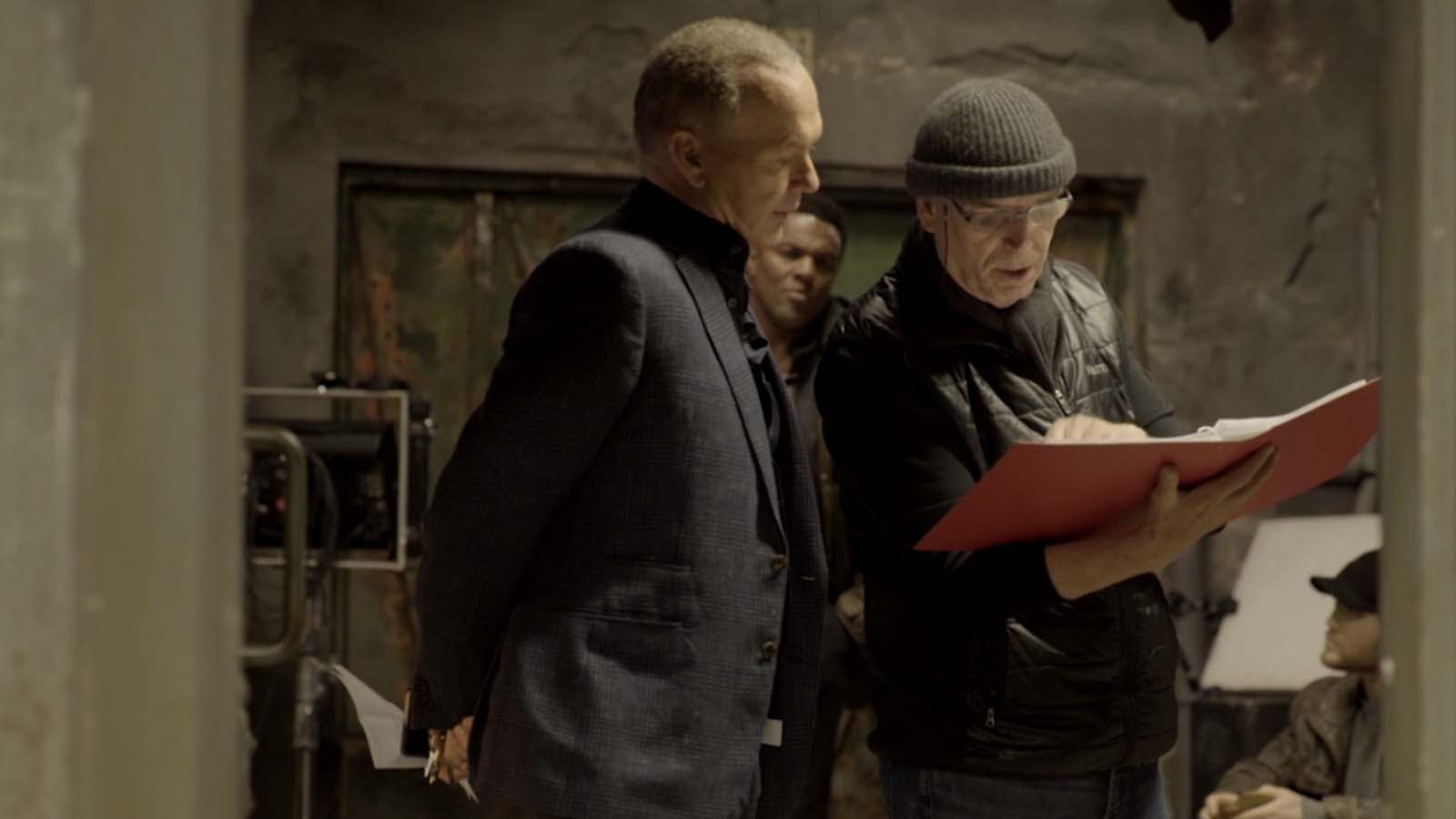
CATANZARO: Absolutely. We were lucky in that we already had a shorthand and also we weren’t trying to get to know each other while we were trying to make a movie remotely. One great thing about working with Martin—well, great or terrible depending on your point of view—is that during production, he will always be in editorial. He will be there after the longest day imaginable. He will show up, often with a bottle of wine and he will watch dailies. He will watch cut scenes.
He will show up, often with a bottle of wine and he will watch dailies. He will watch cut scenes.
I think it’s not really about giving feedback as much as it is for him just to be able to catalog these things that we’ve already got so that it can inform his decisions going forward on the set. That doesn’t mean he doesn’t give notes; he certainly does, but I feel it’s great to have him so involved early on. There are no surprises. I show him very early versions of scenes. I show him things that I’ve tried, that he may or may not like. So, then we both know what path I’m on and I make sure that I’m delivering for him and we’re not missing anything.
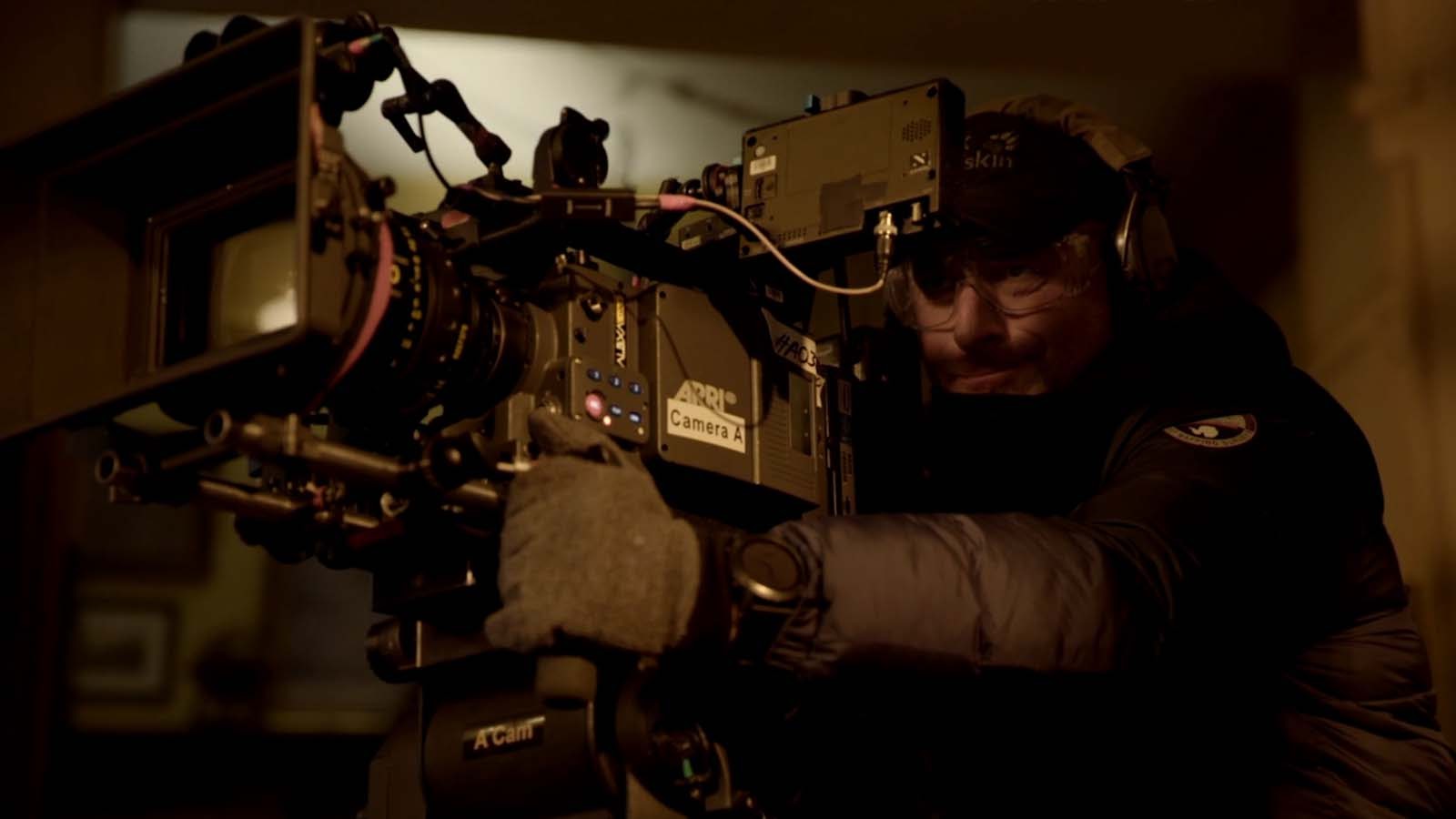
They sent me back to Los Angeles. I had already spent a number of hours and weekends with him, so I then continued to work from home and I fortunately am fully set up at home and have been for a long time. I got to rent my system to the production instead of having it just sit here idle, which was kind of nice. I continued to work from home, and Martin continued to work from his house. We live probably less than five miles from each other, but we worked remotely.
Then, he went off to shoot in Bulgaria. The rest of post [mixing and color] was actually finished in London and I did not feel comfortable traveling. I was given the opportunity, and in fact was very encouraged to go, and I did not want to, so I stayed here. My assistant from Bulgaria flew to London. I had another assistant based in London and we worked remotely to finish the film. Our sound crew was based in Vancouver. Our composers were here in LA. So, we were really all over the place and we managed to pull it off.
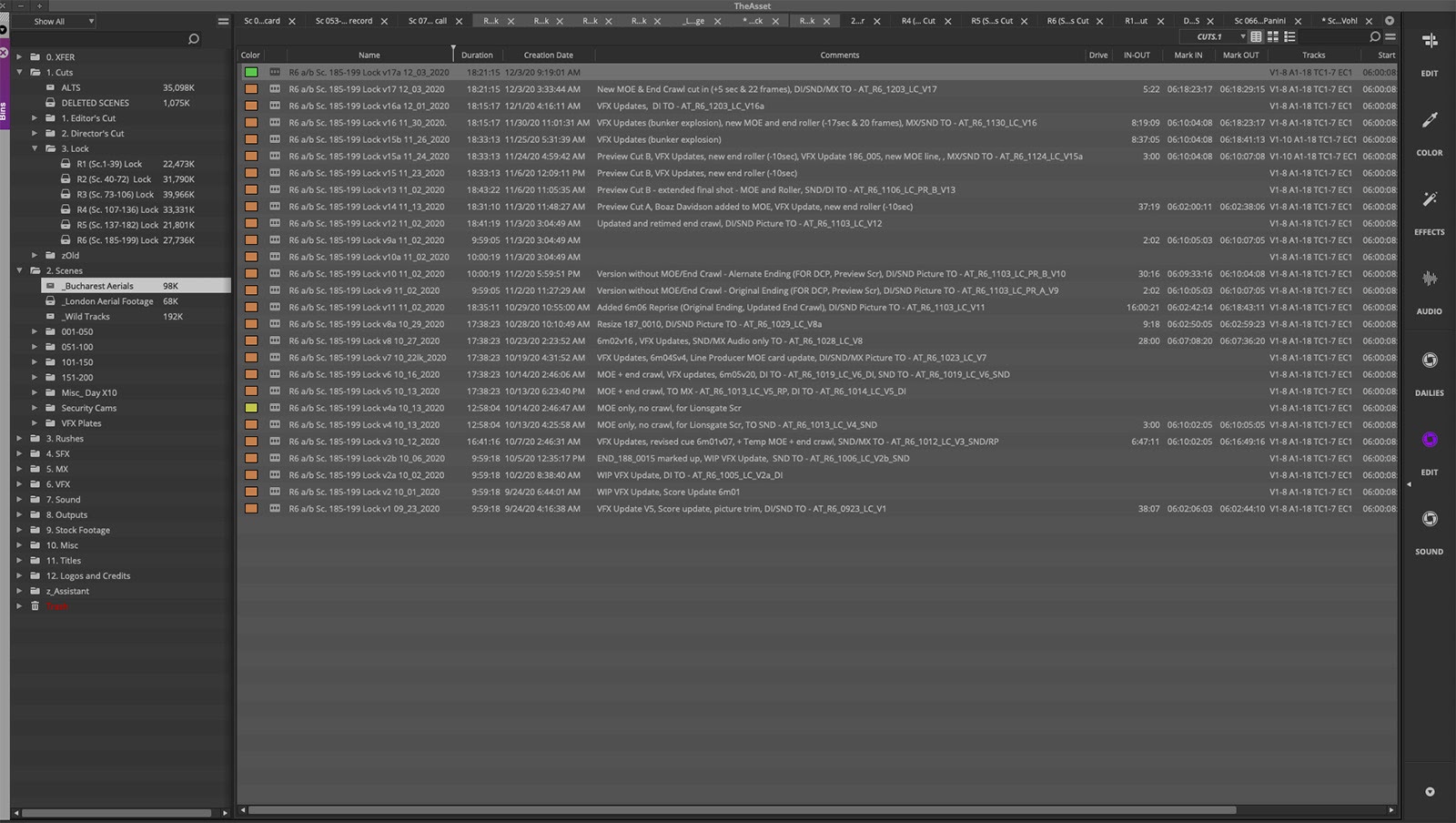
The final mix was in Bulgaria actually. So, our Vancouver team flew to Bulgaria, Martin flew to Bulgaria, my assistant flew back to Bulgaria where he’s from, and we finished that way. I actually did go to a soundstage here in town. It was kind of a magical process. The mix stage in Bulgaria actually drove the stage here in Santa Monica. So, I was hearing presumably the same thing that they were hearing on the dub stage in Bulgaria. It was fascinating and very cool. I was very grateful to be able to have that experience because final mixes are part of the process I enjoy most. So, not getting to be there with them was a bummer, but I still had the experience of hearing it like it was intended to be heard.
HULLFISH: What’s the value to the production of having you at the mix?
CATANZARO: I think there are a lot of nuances and layers that are added in the final. Sometimes my presence is to protect things that I know the director really liked, such as performances. Somebody might suggest a dialogue alt because the original wasn’t clear, but I know for a fact that this was the performance that Martin absolutely wanted, so we need to try to make production work. Little things like that.
There is value in having somebody who’s lived with the material throughout its entire existence being there to protect it.
I do think that there is value in having somebody who’s lived with the material throughout its entire existence being there to protect it and also to encourage exploration in areas where the director has expressed an interest in trying different things with sound design and talking about ideas that the director and I had but couldn’t execute with the toolset that we had available to us. I feel like when I’m on the dub stage in the final mix and the director is not there, I’m a messenger. I’m trying to convey the director’s wishes and also protect what I know his or her vision to be.
HULLFISH: Tell me a little bit about the story process that happened between your assembly edit and the final picture.
CATANZARO: We didn’t do as much work on this film as some others. This story is pretty linear, so there’s a very limited number of changes you can make in terms of scene order. Intercutting, yes. Excising, yes. Those were things that we could do, but we couldn’t really turn it upside down, dismantle it, and do too much to it in terms of the structure that way.
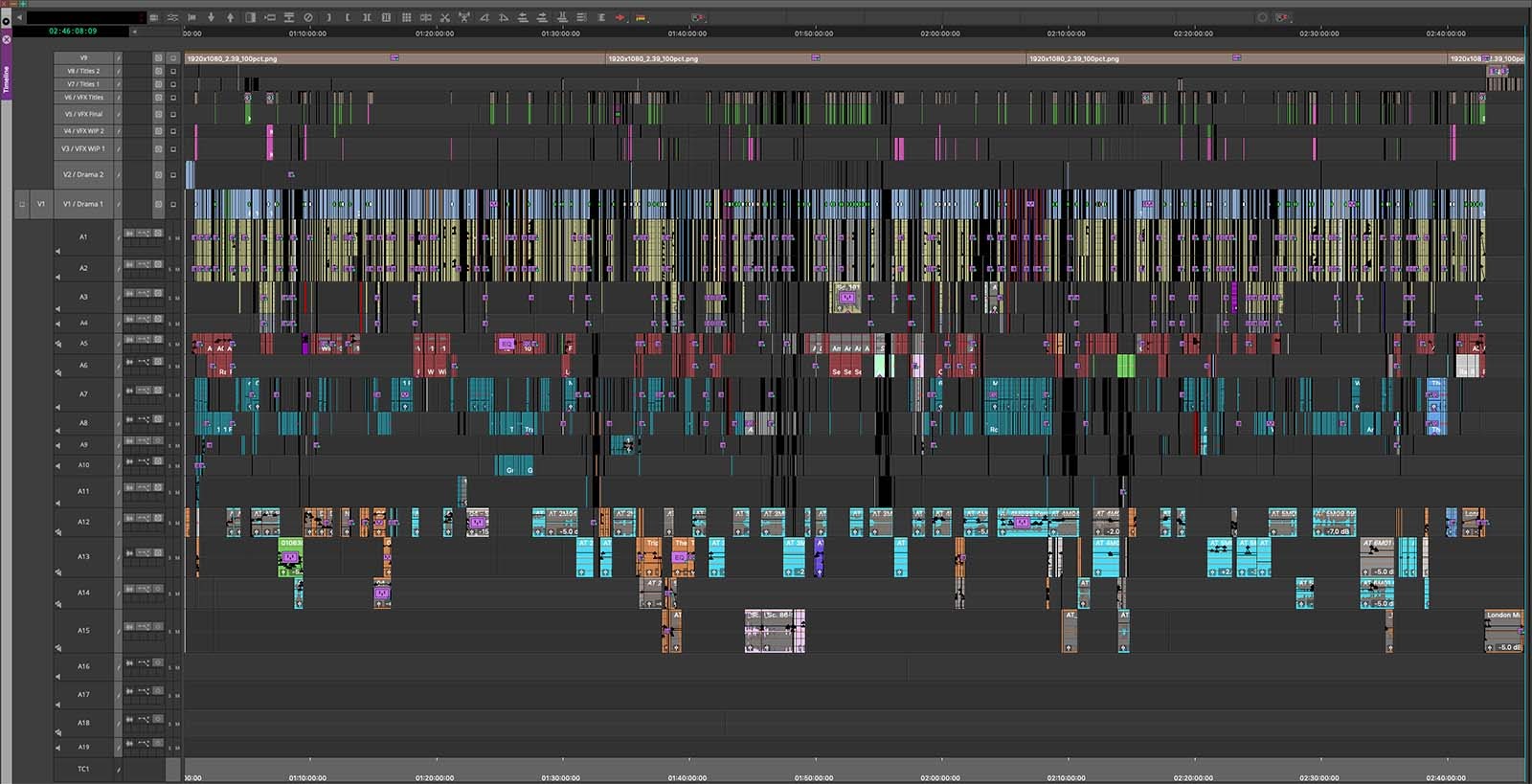
HULLFISH: Can you describe some of those excises that you made and what their purpose was?
CATANZARO: I can tell you there really aren’t that many. The one scene that I did mention previously was this art gallery scene where Anna is with her friends and she’s hit on by a dude and he was unsuccessful. I guess it’s cute and it’s funny, but we don’t really need it around that time of the gala prep montage where we’re seeing the security detail. That just wasn’t essential. There’s another nice scene of Anna sitting on a bench calling Moody saying she’ll come by after work. We didn’t need it. Locking up the bookshop at night is another one.
It’s actually surprising to me—looking back at this—that we didn’t eliminate more because I don’t feel like the story was burdened by extras. Normally, I do delete a lot more. So, I guess this was a pretty tight script to begin with. We did a lot of tightening. Martin really likes to tighten, especially in the action sequences. “Is that as tight as you can be? Let’s see if we can get one more frame.”
I know that my first pass better be tight because we’re going to go through it frame by frame, and we did. He’s very precise and I really appreciate that because he always delivers the goods. You always have something great to put together. David Tattersall is the DP and his footage is always just fantastic. He shot The Foreigner as well—the movie that I did previously with Martin. So, I’ve been a little bit spoiled.
As I said, Martin likes everything really sharp and very effective. For the fight scenes there’s not a lot of trickery. They’re very well choreographed. He likes to see the punches thrown. We barely manipulate the shots. I think we sped a few of them up, but Maggie Q did about 90 percent of her own stunts. There were two that she didn’t do that I can think of off the top of my head, and that would have just been an insurance consideration because there’s no way they’re going to let our lead actress do this crazy thing. I really appreciate how precise Martin is.
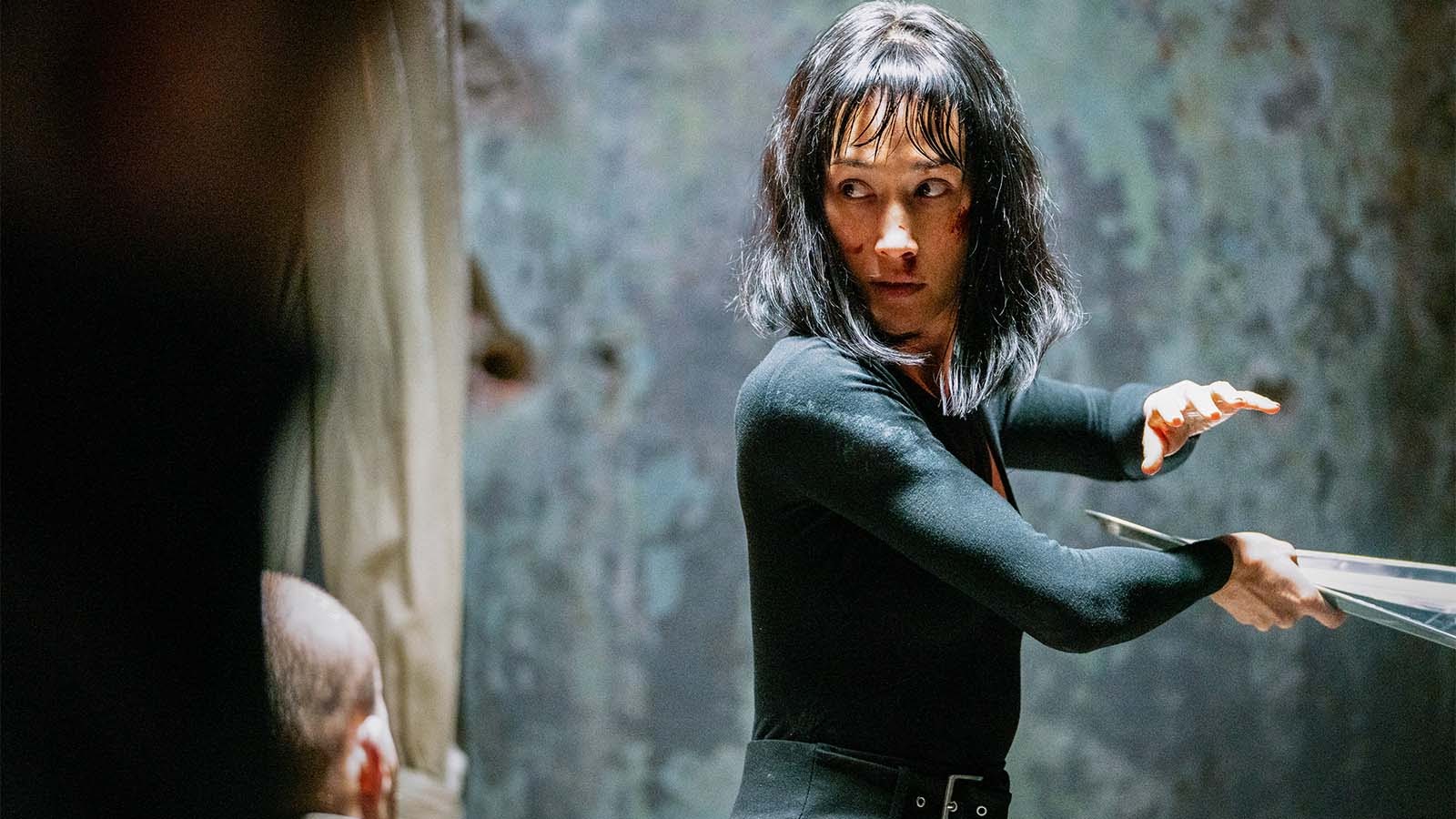
HULLFISH: Were you able to do any screenings for this film to show it to an audience?
CATANZARO: We did preview the film to a big audience in a regular movie theater in Orange County, and it scored very well. So, everyone was really happy. I think it was just a few days before they shut movie theaters down in Orange County, so we really lucked out in terms of the timeline and being able to preview the film in front of an audience. Outside of that, there haven’t been screenings. I have to admit I still haven’t seen it in a theater myself.
HULLFISH: What’s your feeling about screenings?
CATANZARO: Audience previews are terrifying, but I do love and appreciate them so much. For me, that’s what it’s all about is being able to sit in a theater and watch a story that I had a hand in making, and seeing it affect people whether they’re laughing, crying, or yelling at the screen. It’s a pretty amazing feeling to be able to have crafted something that is entertaining someone in that way—or not. Sometimes, as the audience cards will tell you, people are very honest and very blunt, but I do find that the focus groups are generally pretty good.
What it’s all about is being able to sit in a theater and watch a story that I had a hand in making, and seeing it affect people whether they’re laughing, crying, or yelling at the screen.
I know a lot of people who just read the summary from focus groups—the report that comes back after an audience preview that tells you what’s working and what’s not, which characters we like or don’t, what parts of the movie are slow, did you like music, those kinds of things—but I do really like to read all the individual comment cards because I feel like these are the people that I was sitting with and they’re telling me their experience. They’re being brutally honest and I think it’s really fascinating to see what the feedback is.
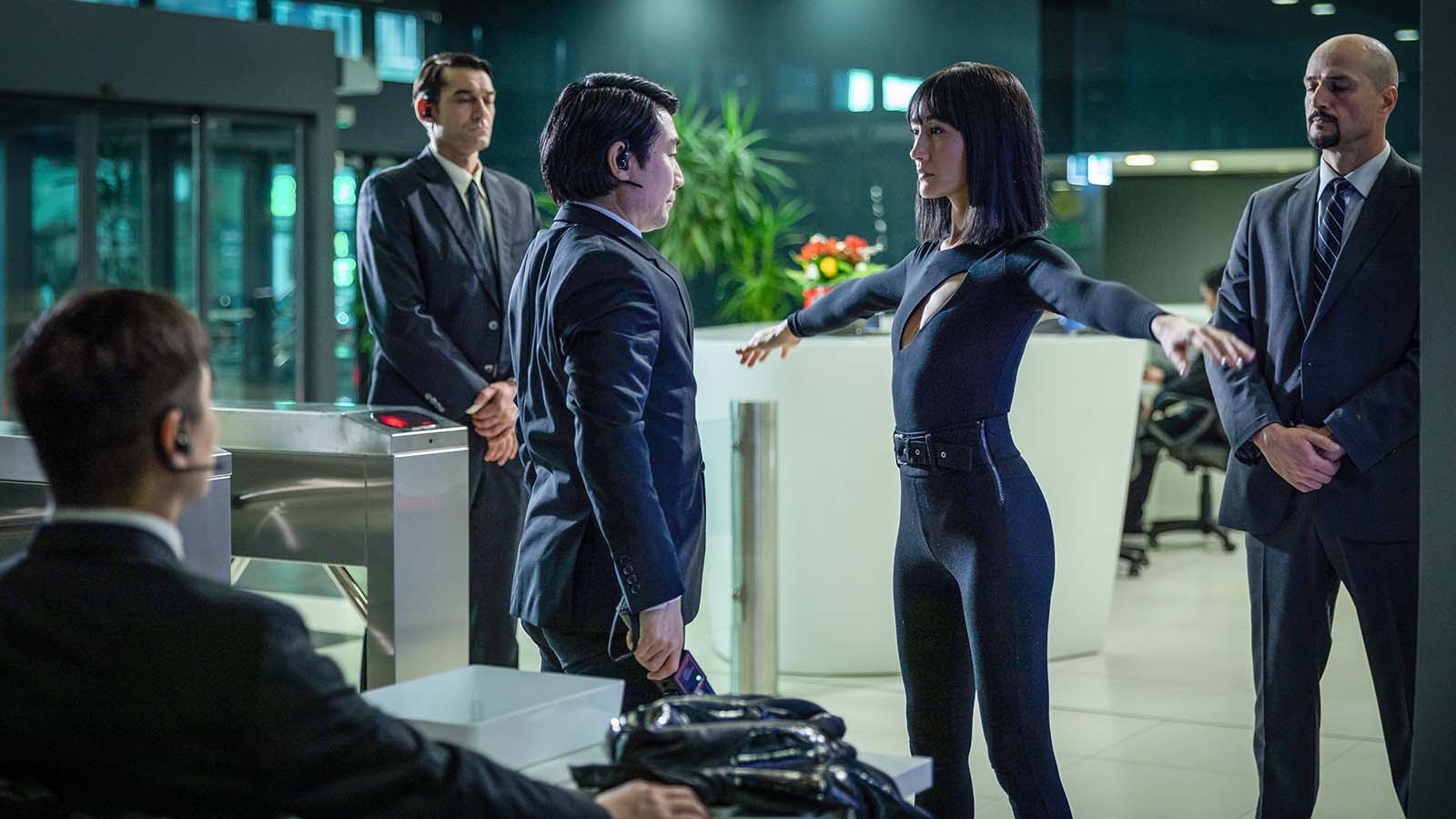
The films that I’ve previewed have scored very well, so I’ve never been in that situation where we’re walking away thinking it’s a disaster. I’ve always been able to walk away with really helpful information but also just a general good feeling that what we did is working. I’m sure it won’t always be that way. I’m sure I’ll have a terrible preview at some point, but like I said, I’ve been lucky thus far.
HULLFISH: Thank you so much for joining me. It was great talking to you again.
CATANZARO: Thanks again. Take care.

